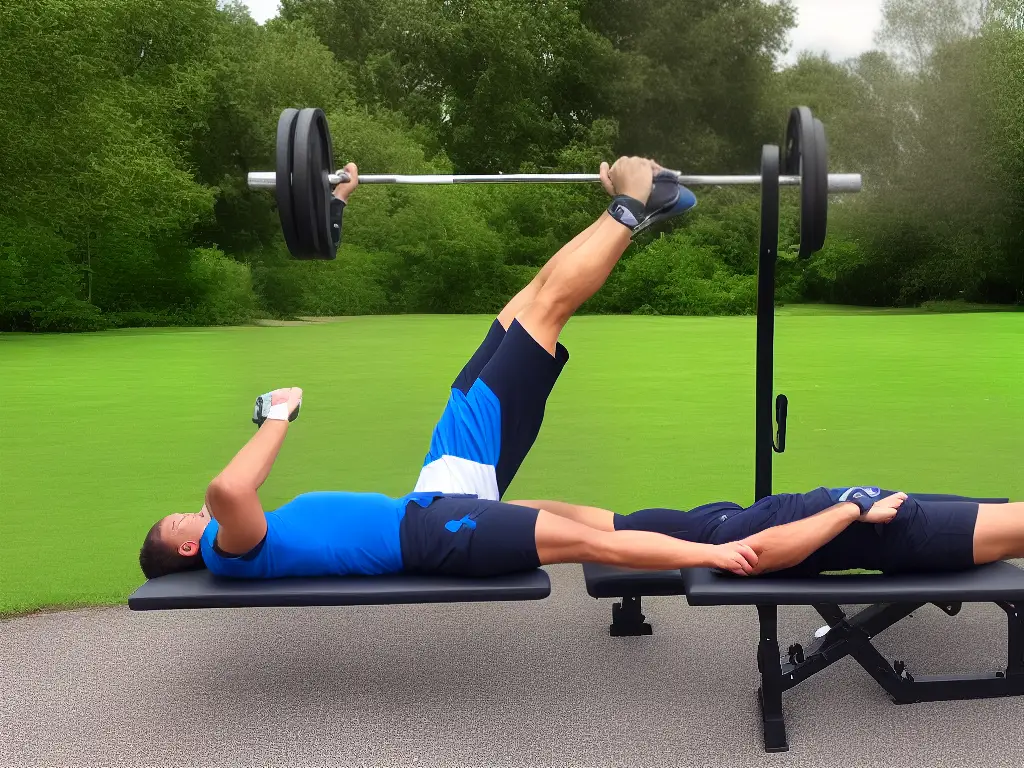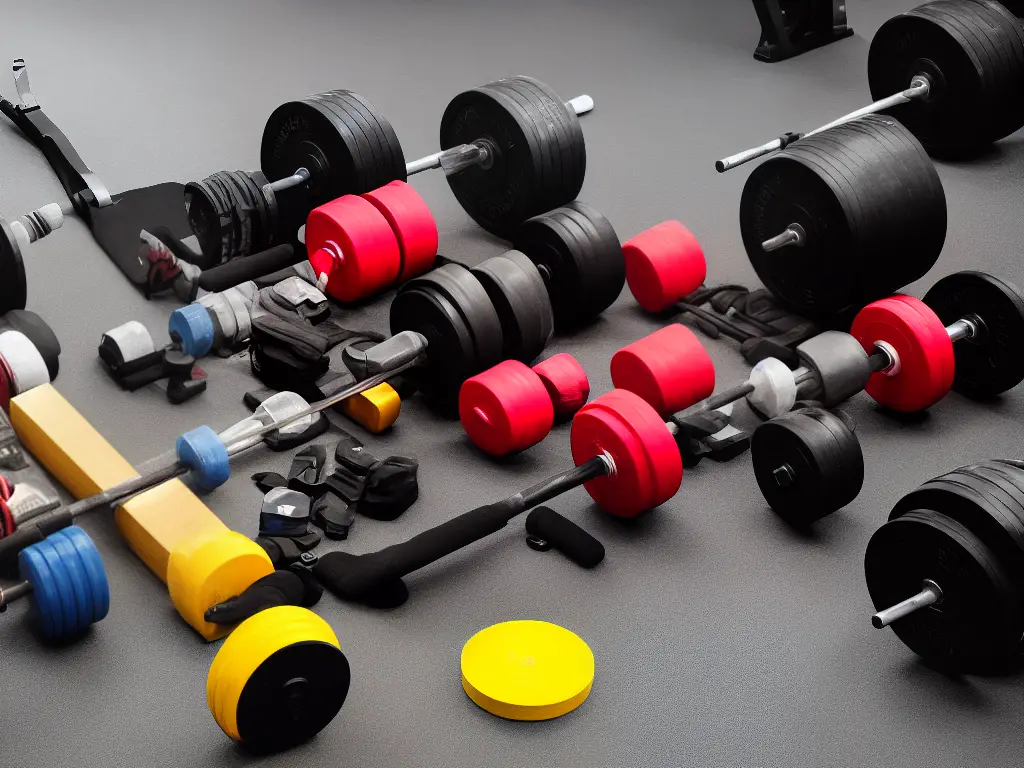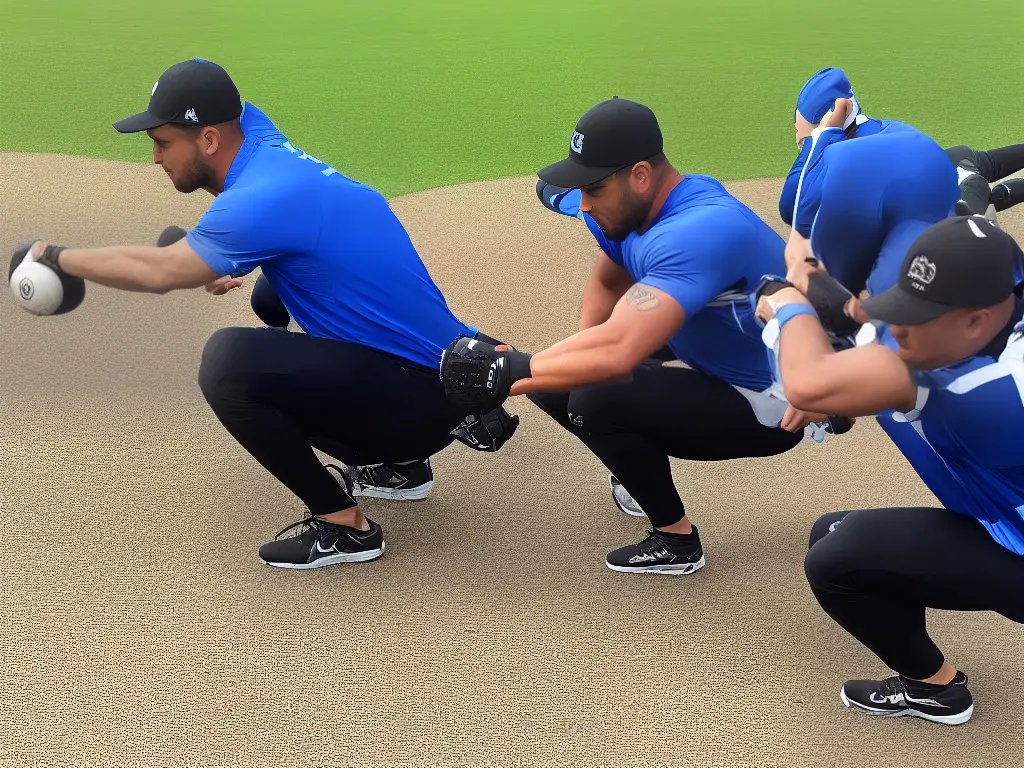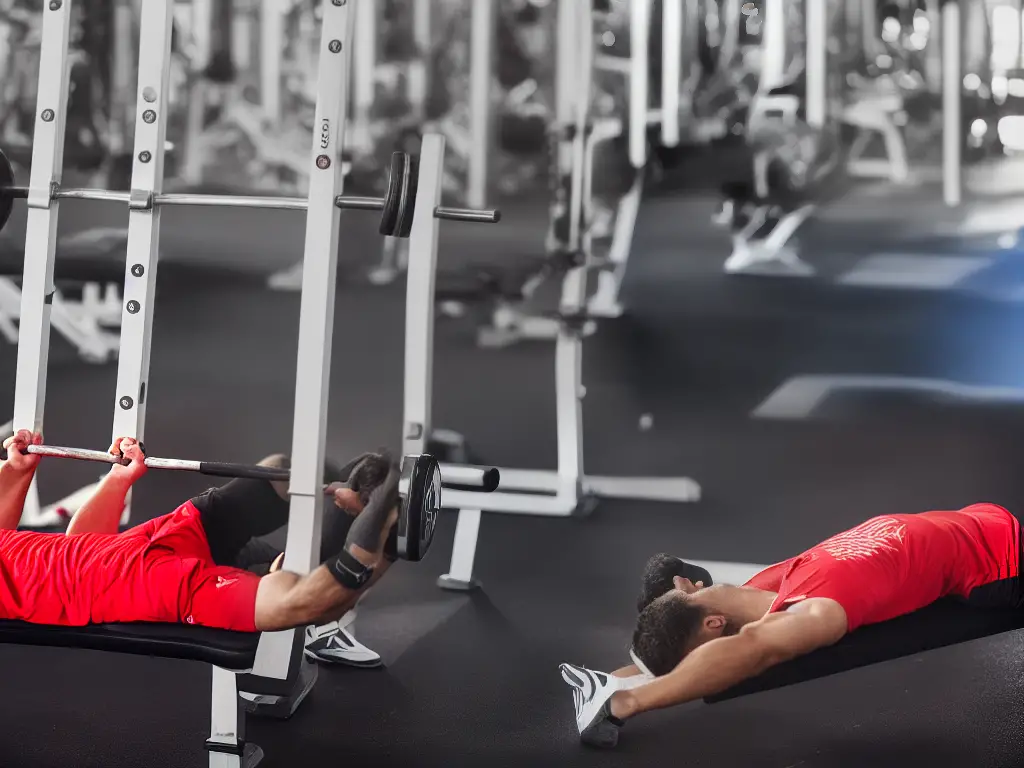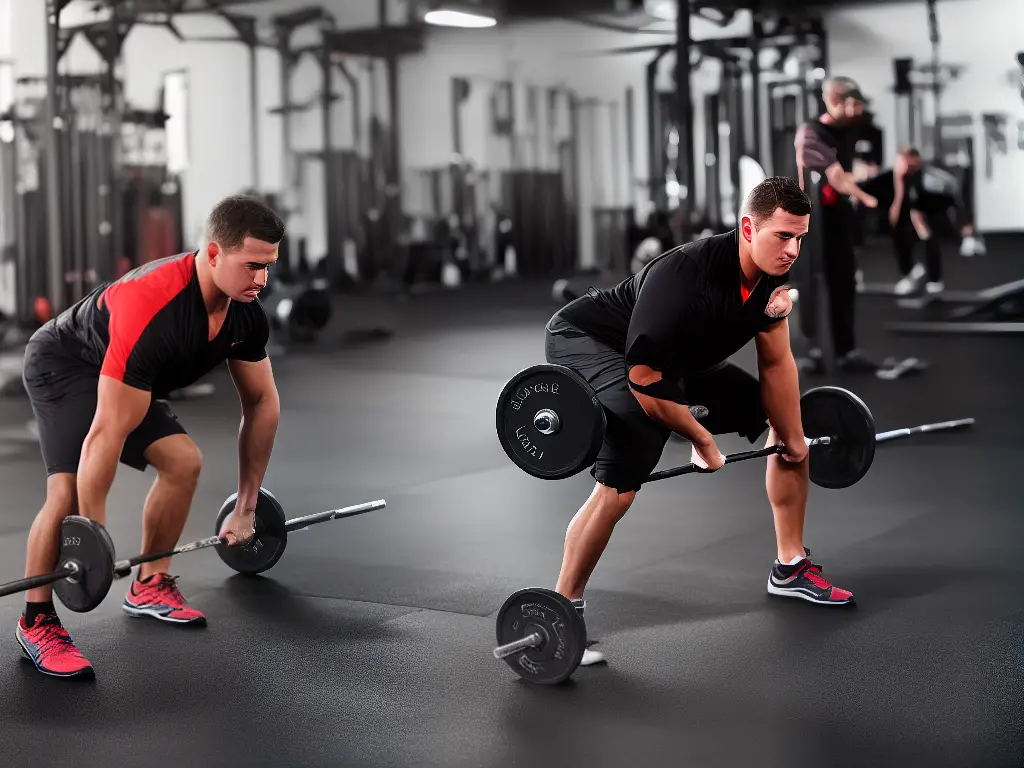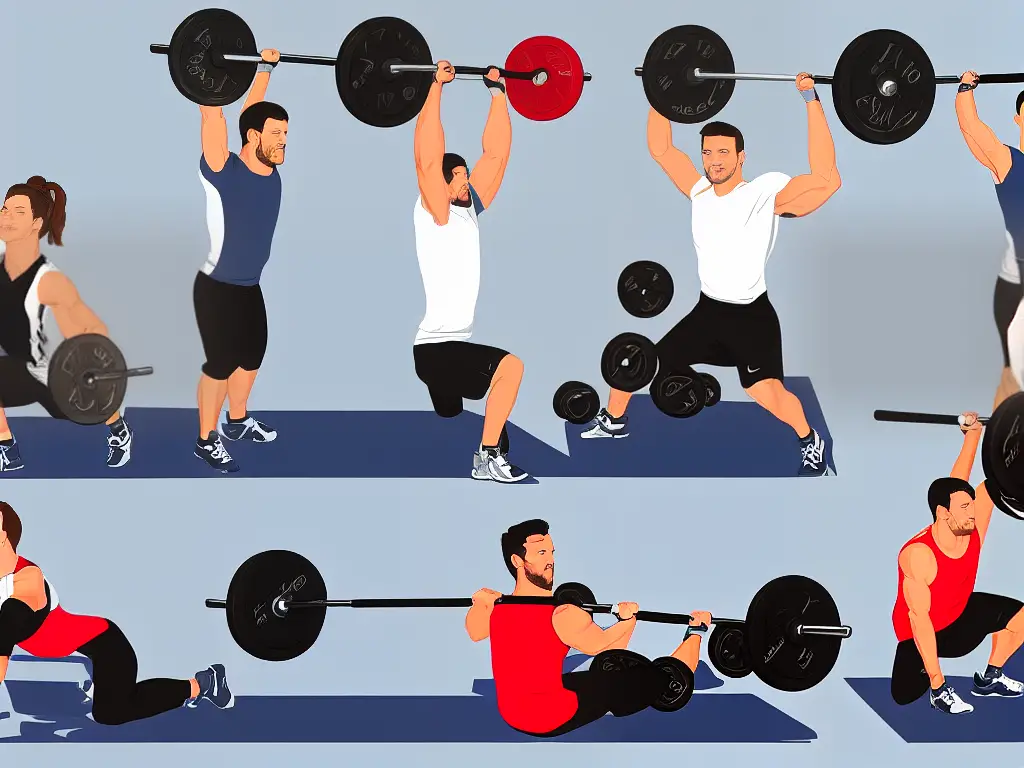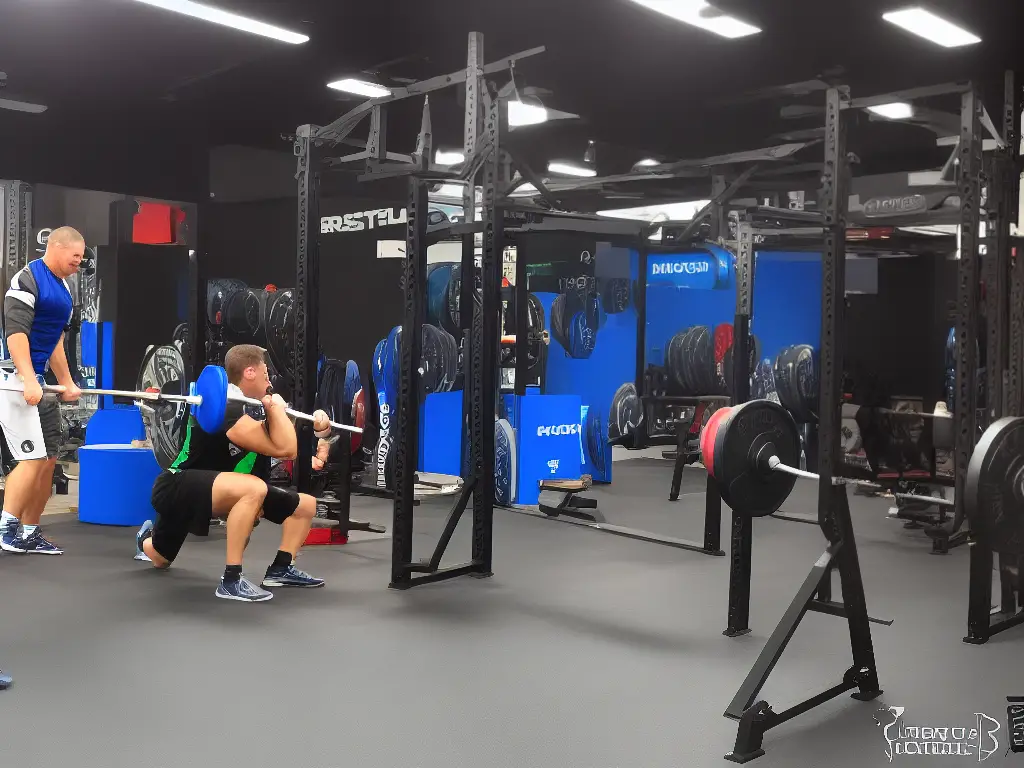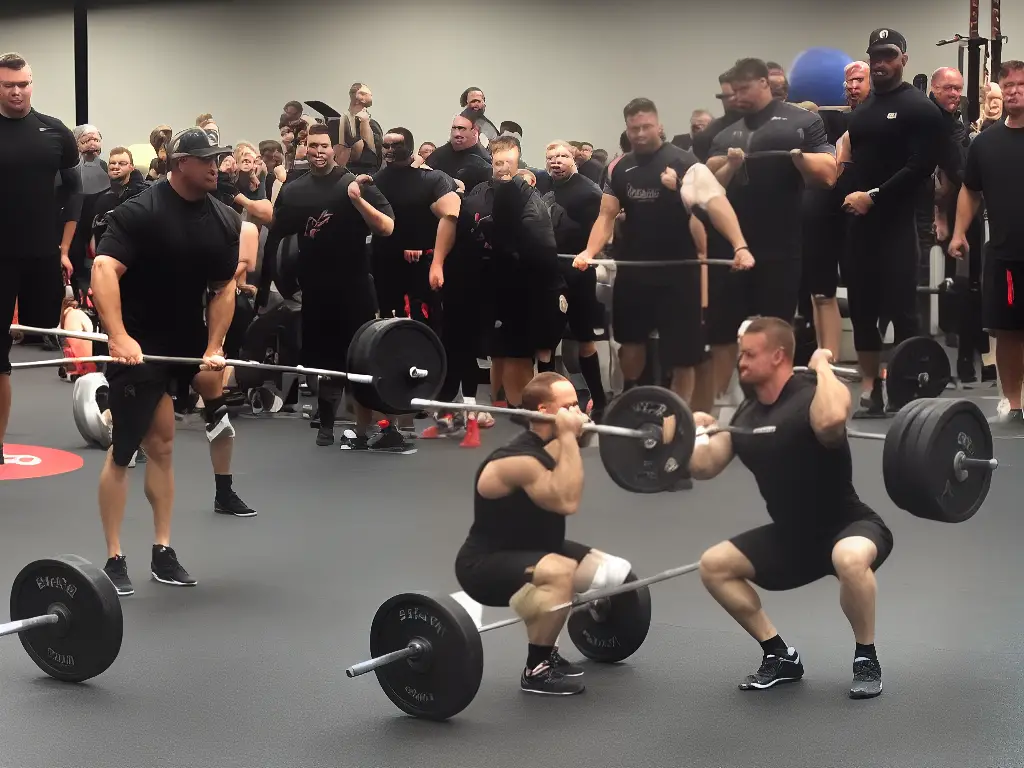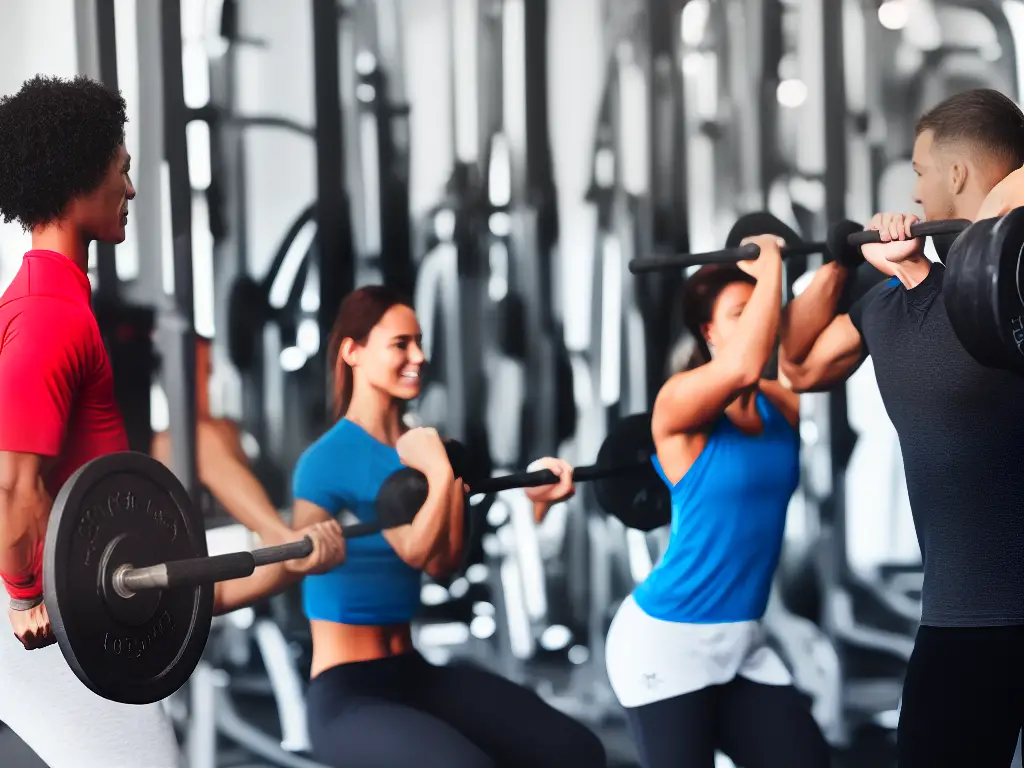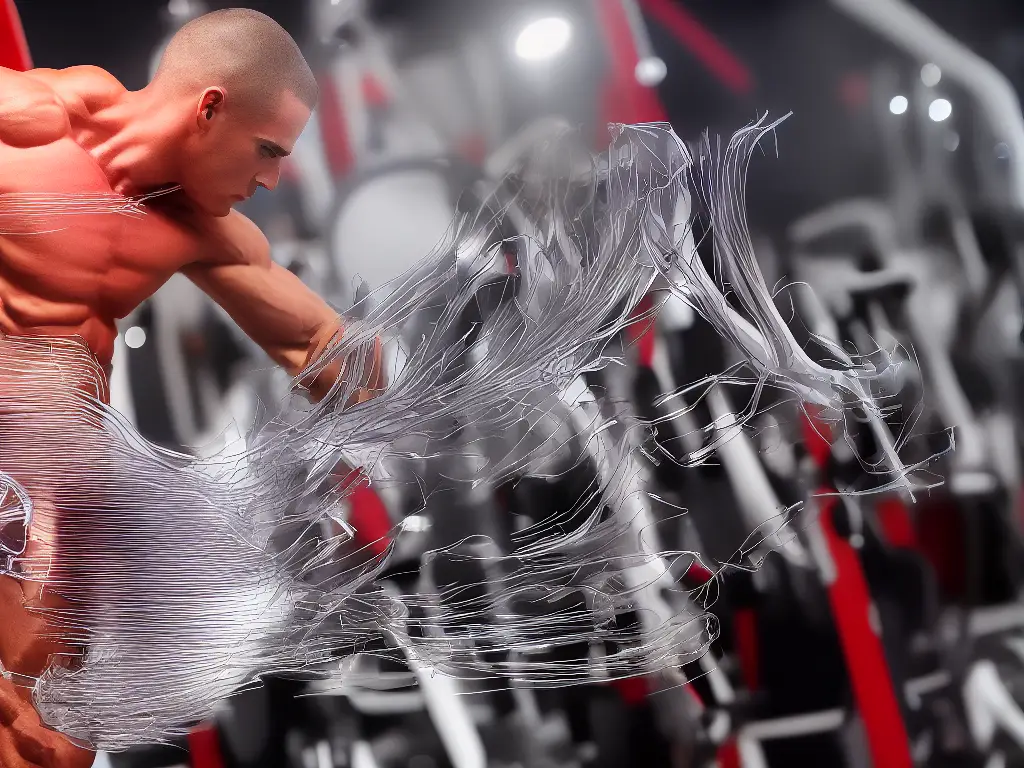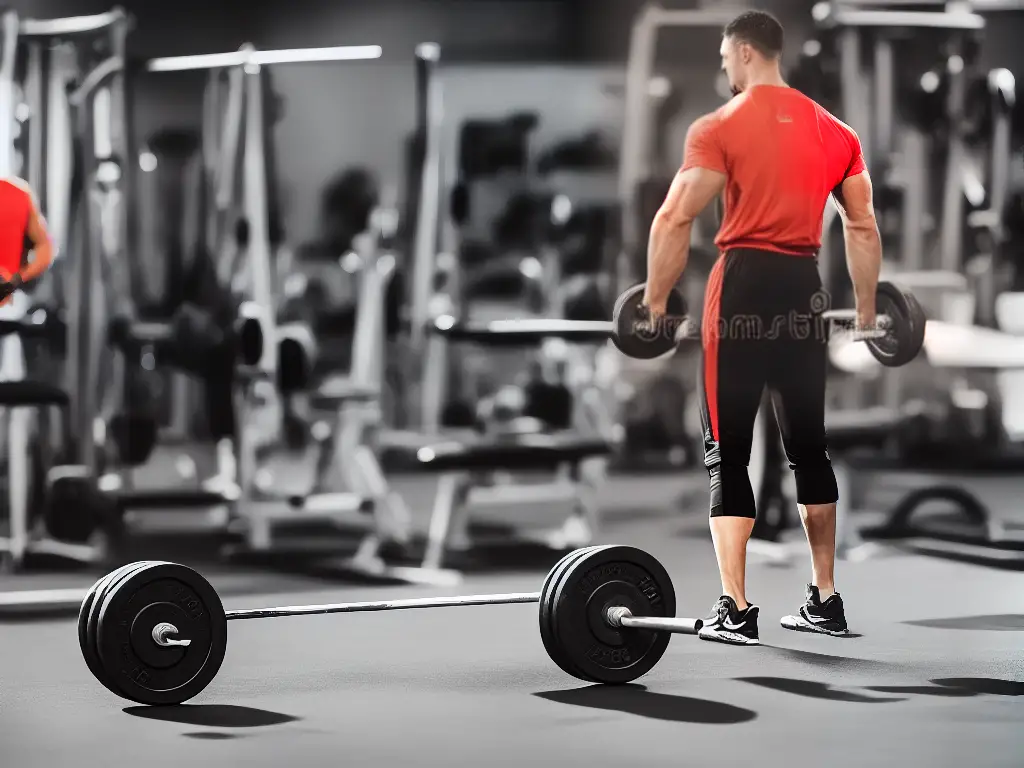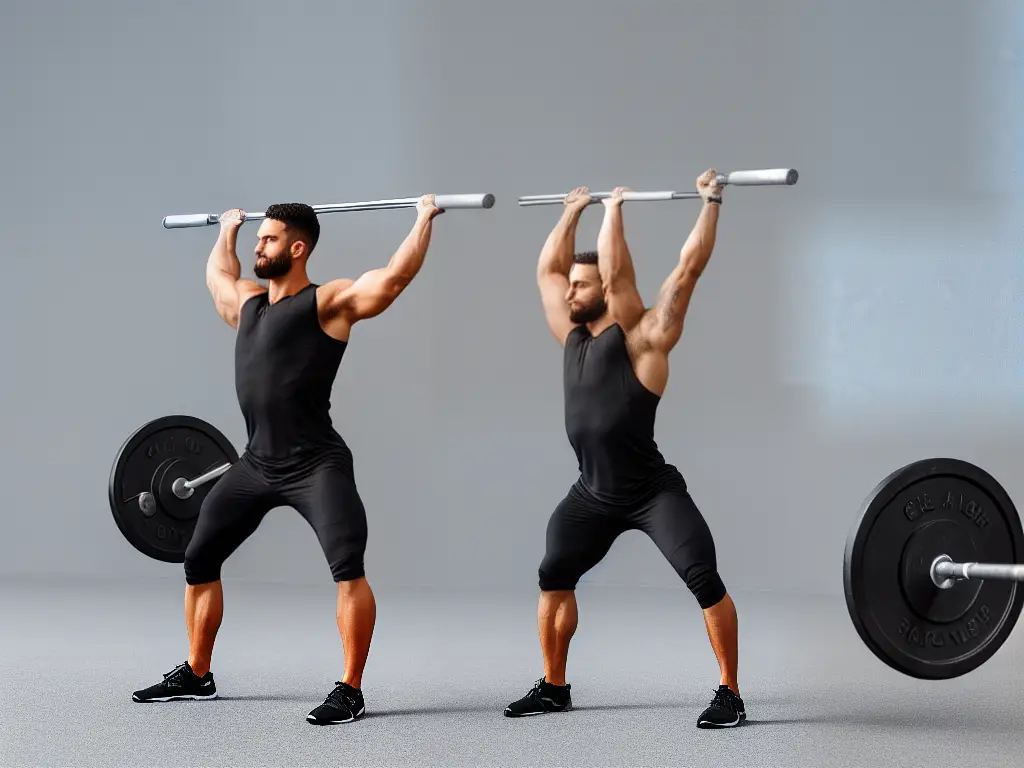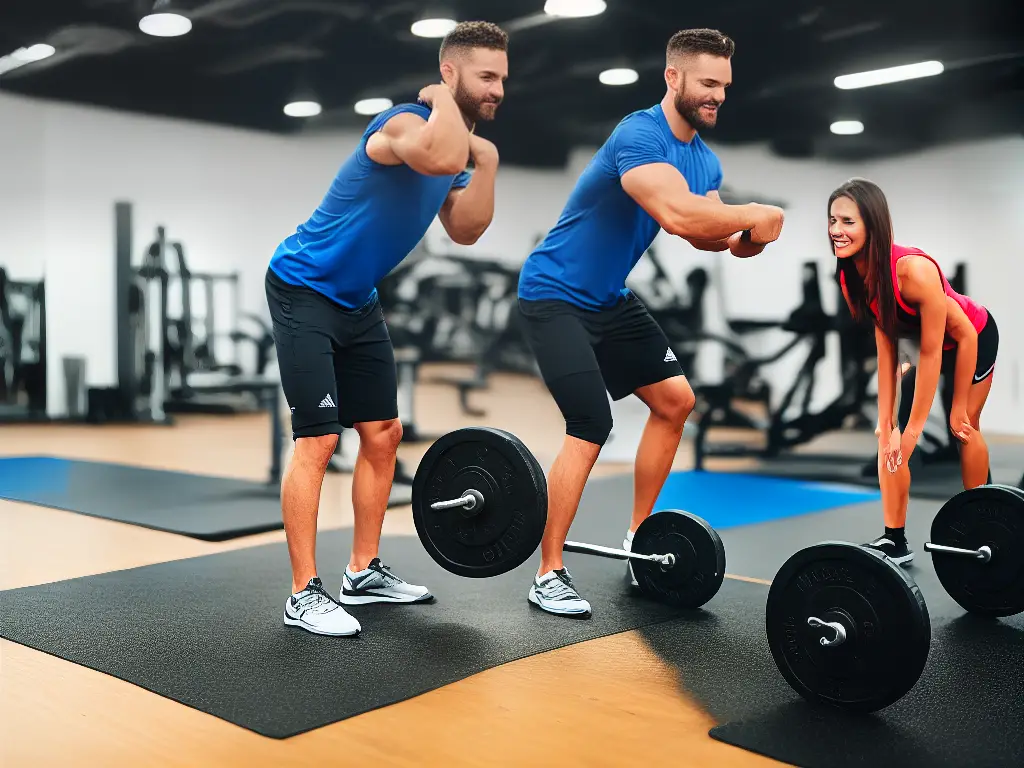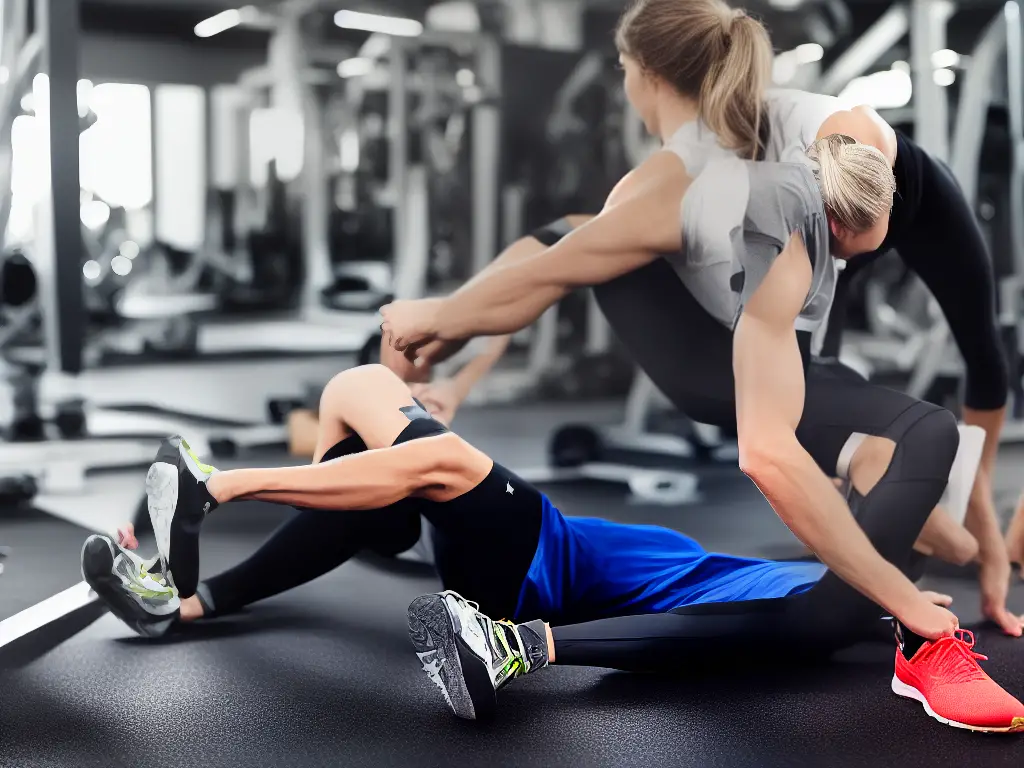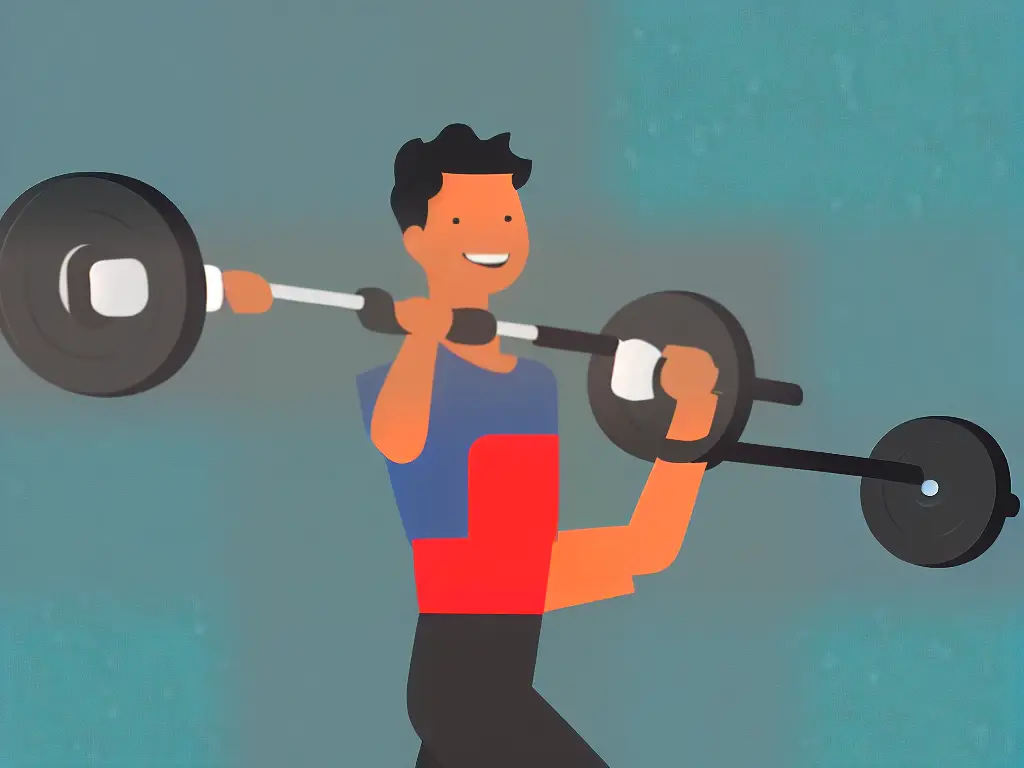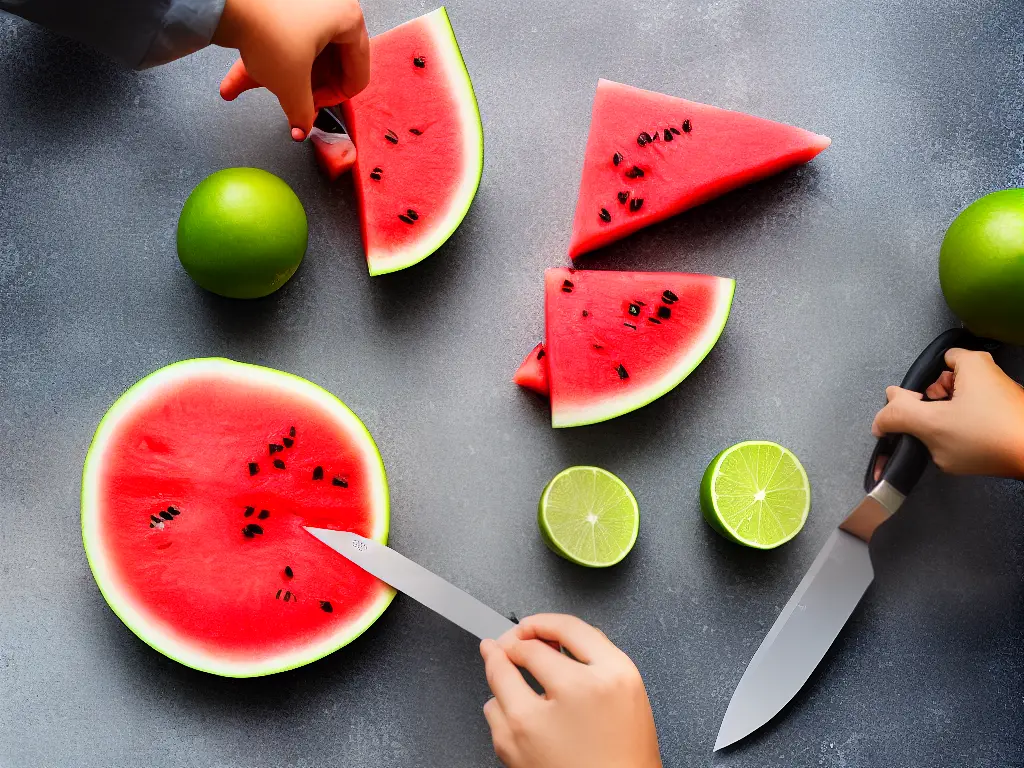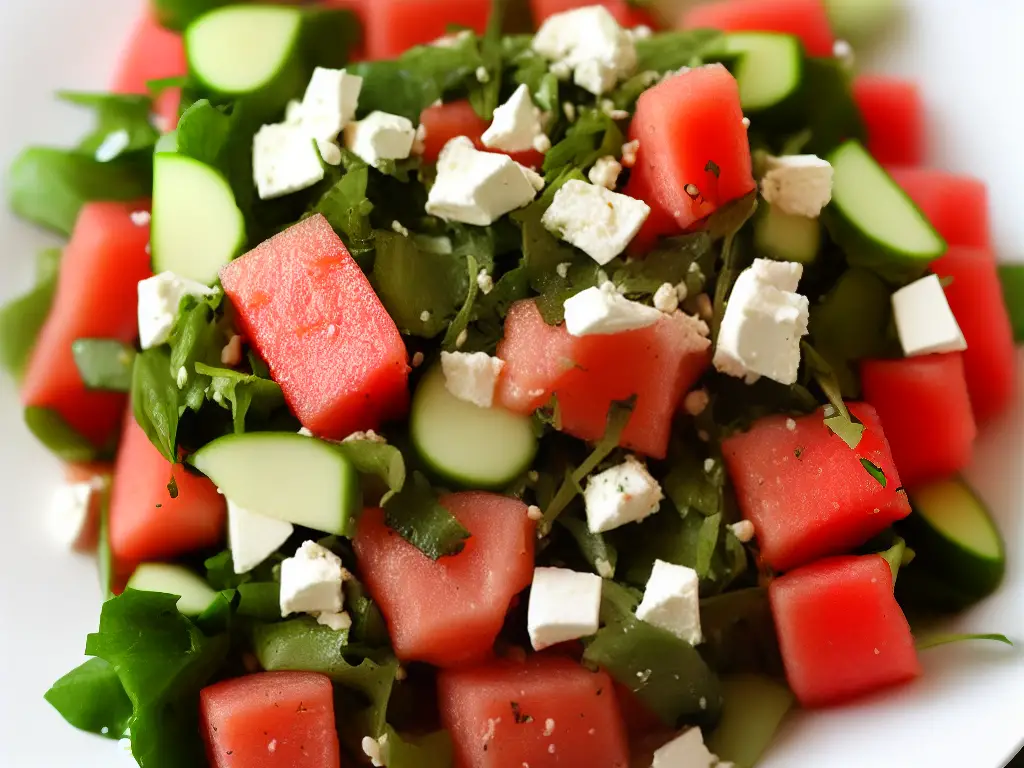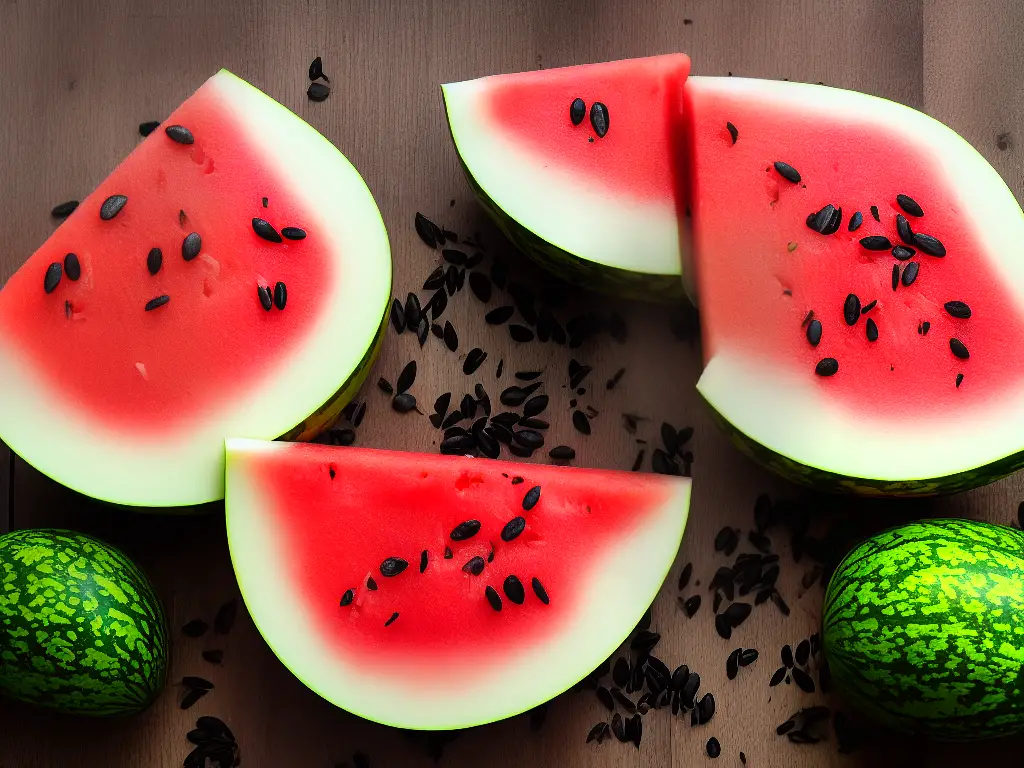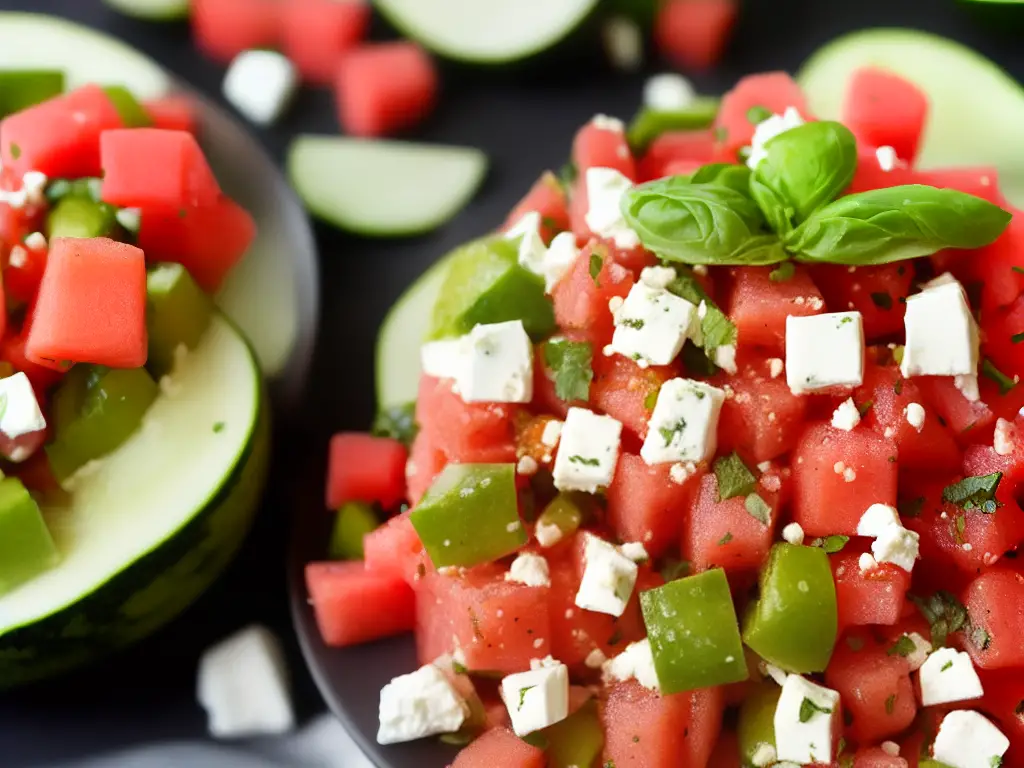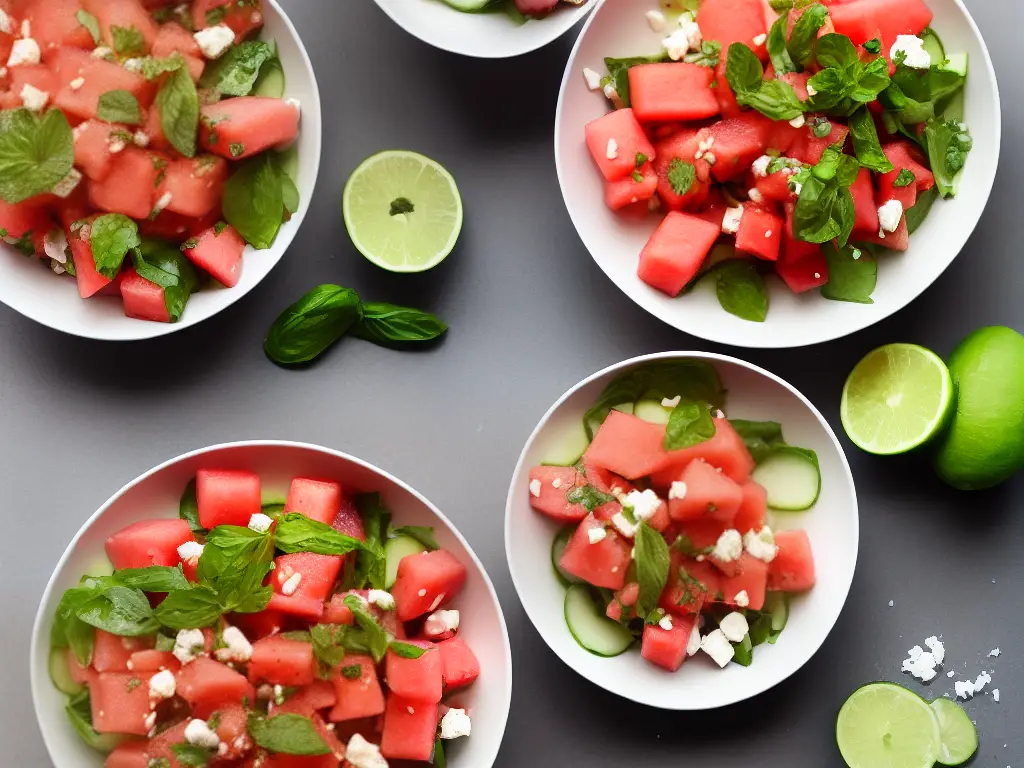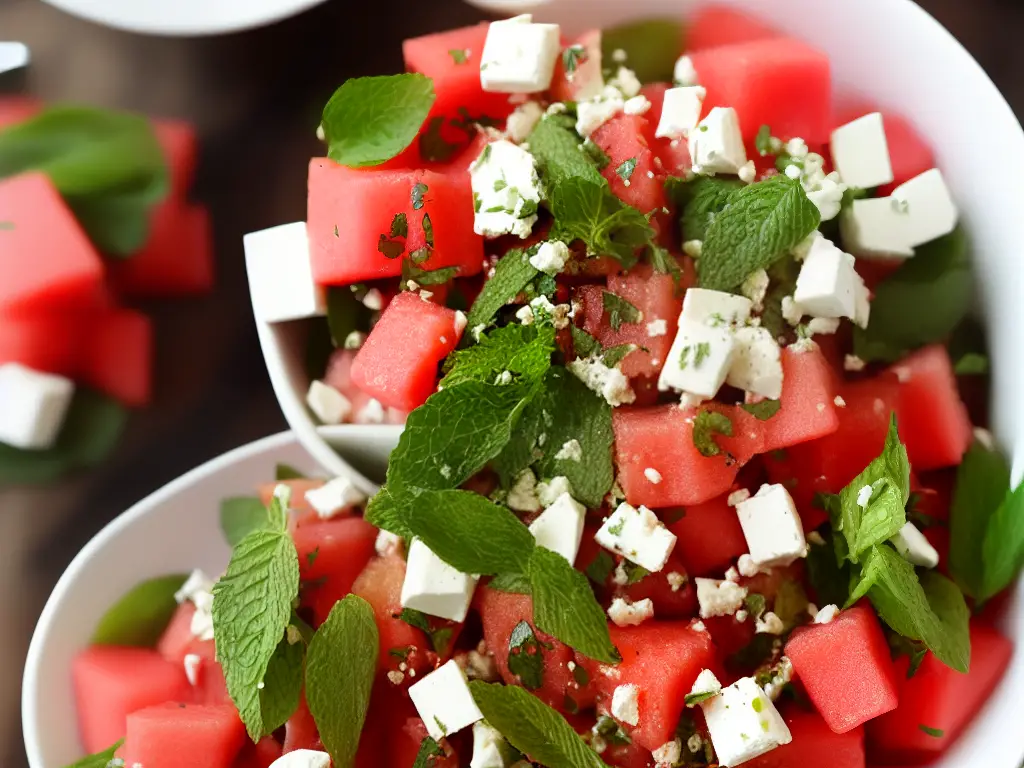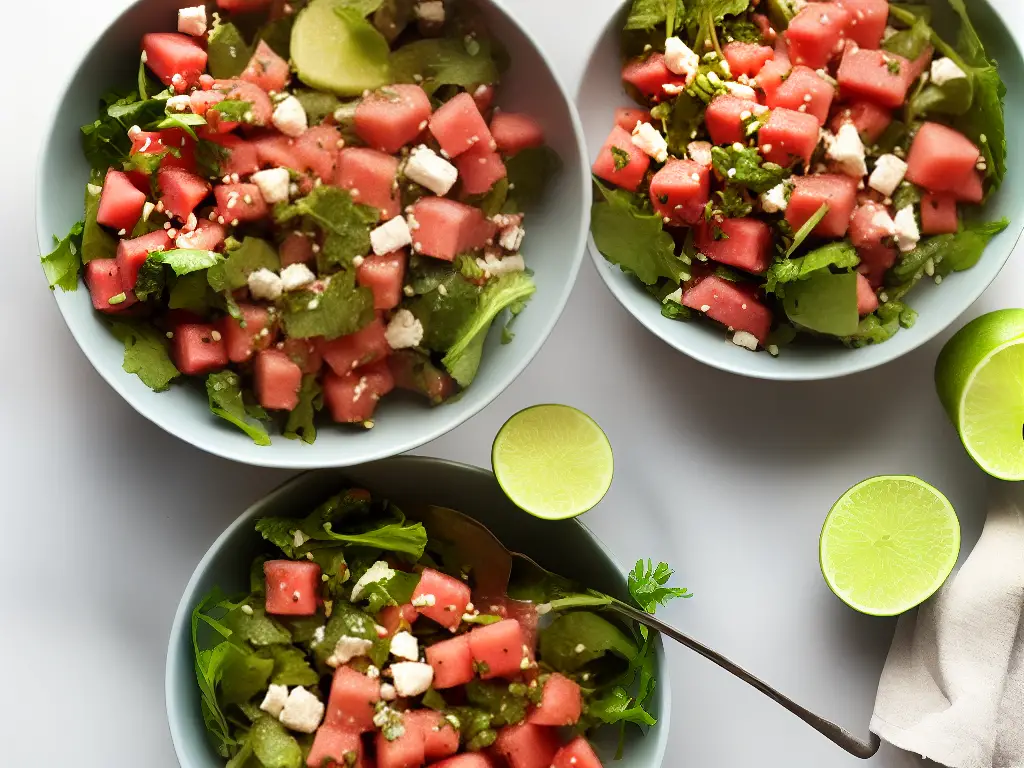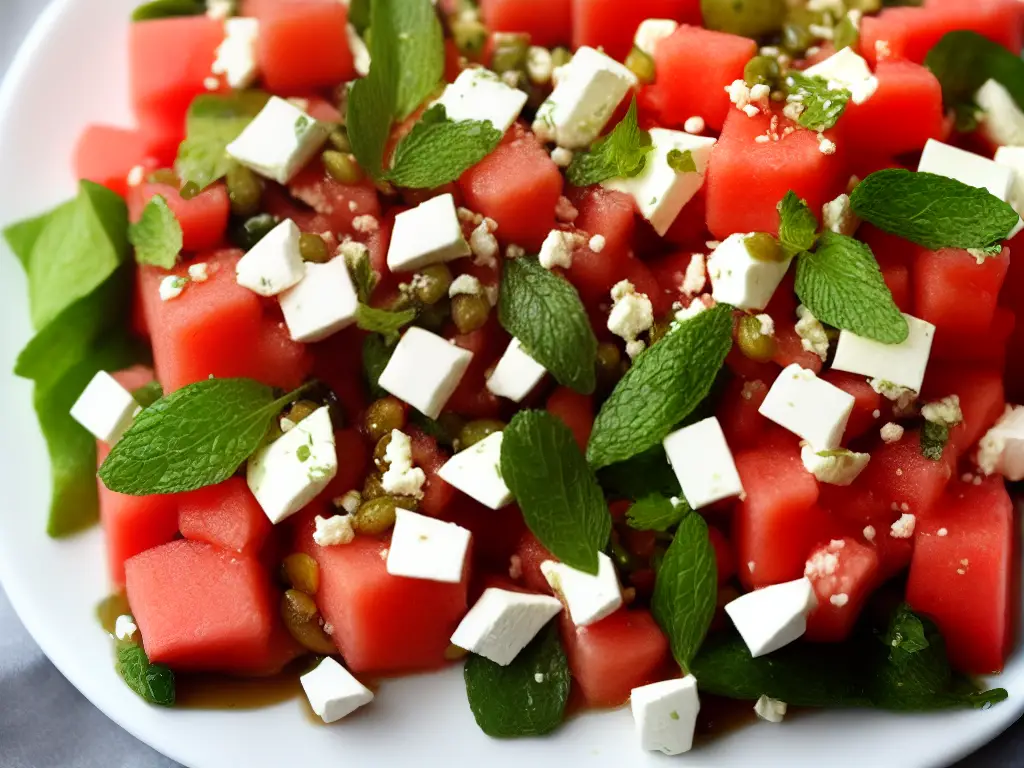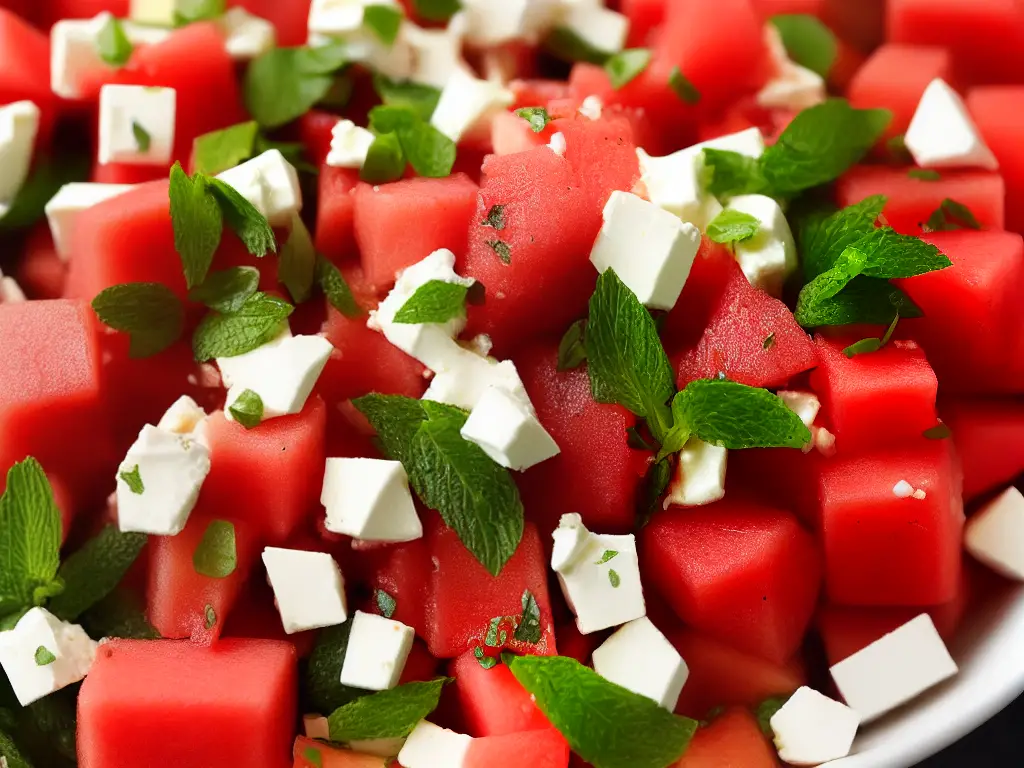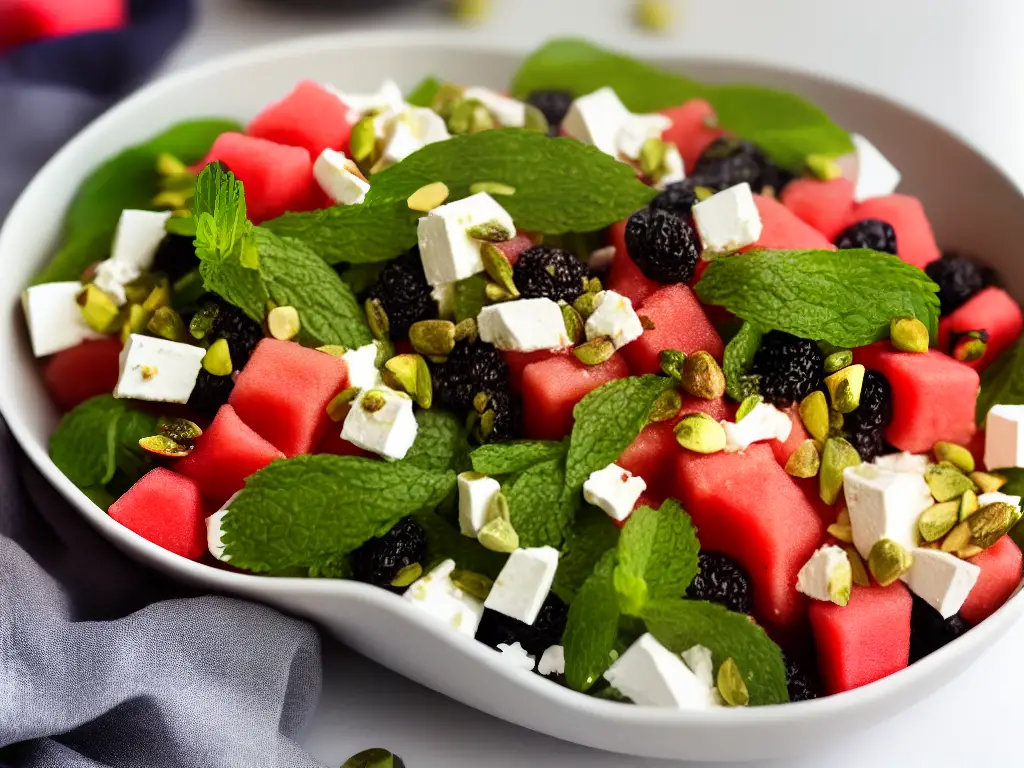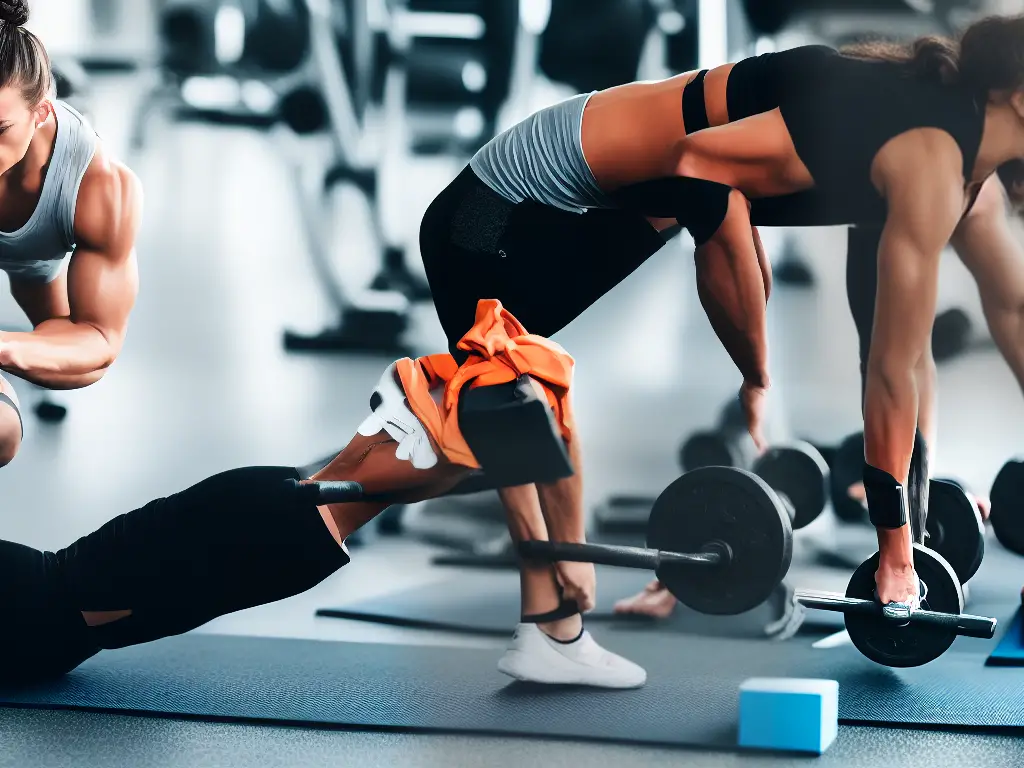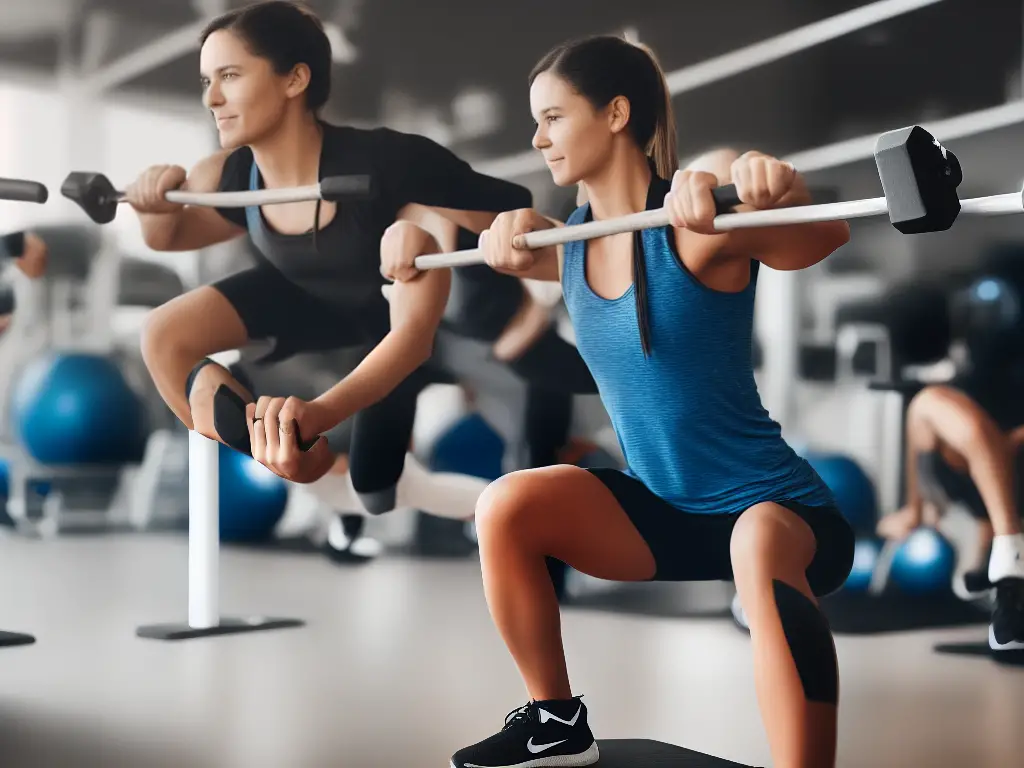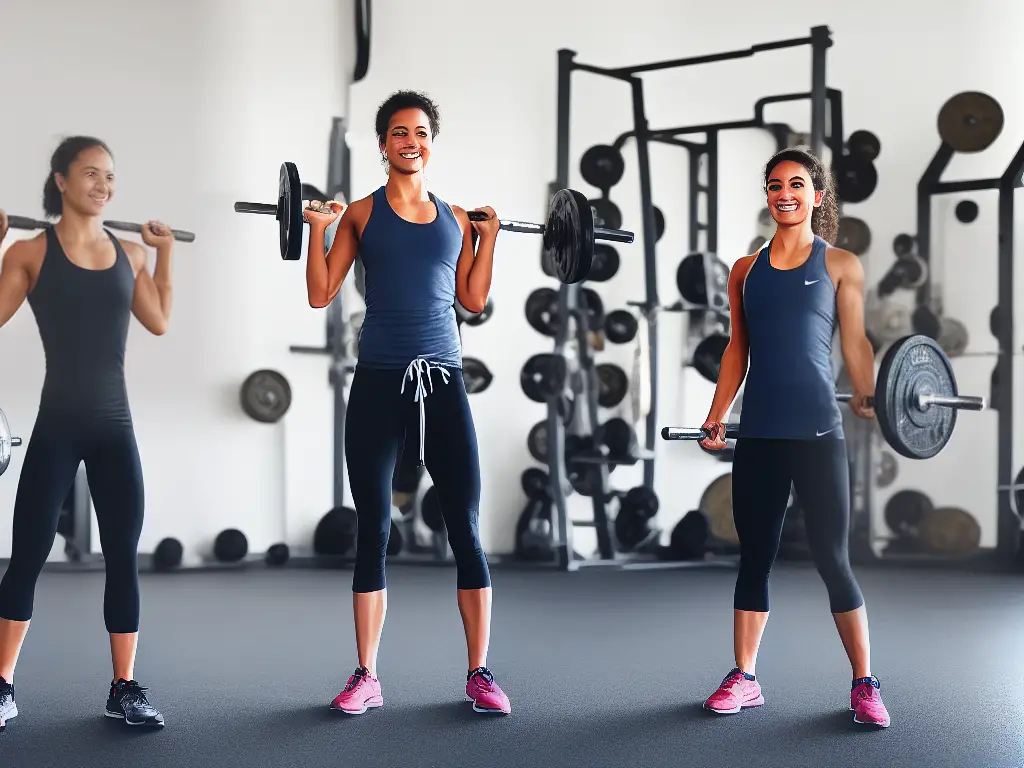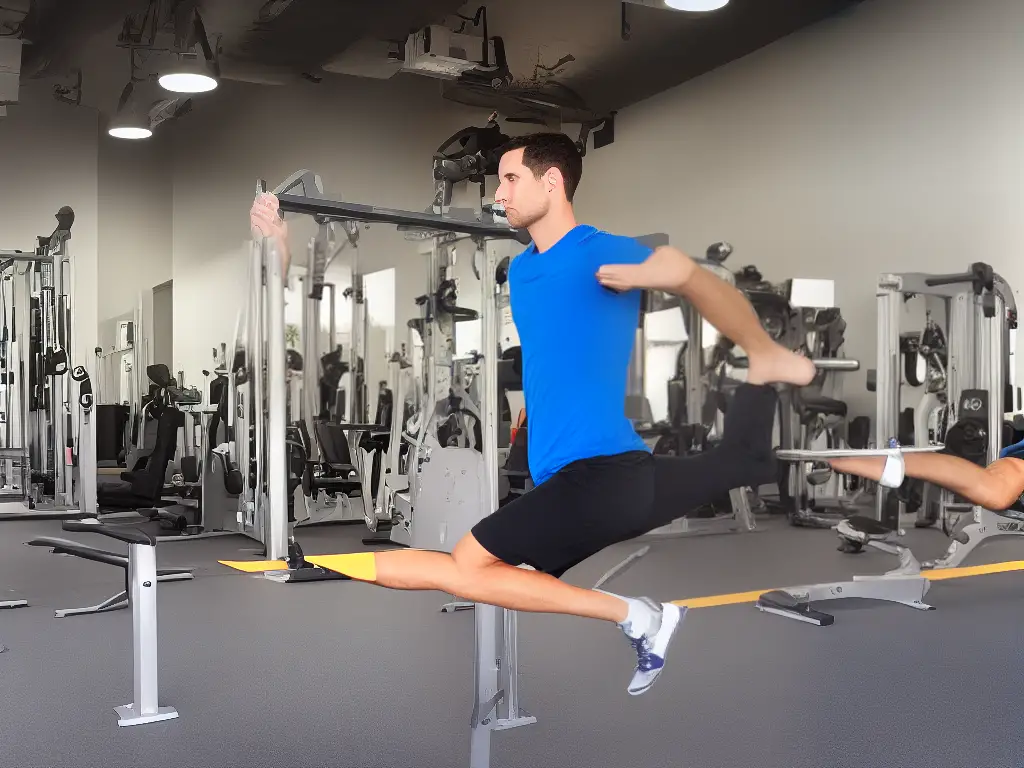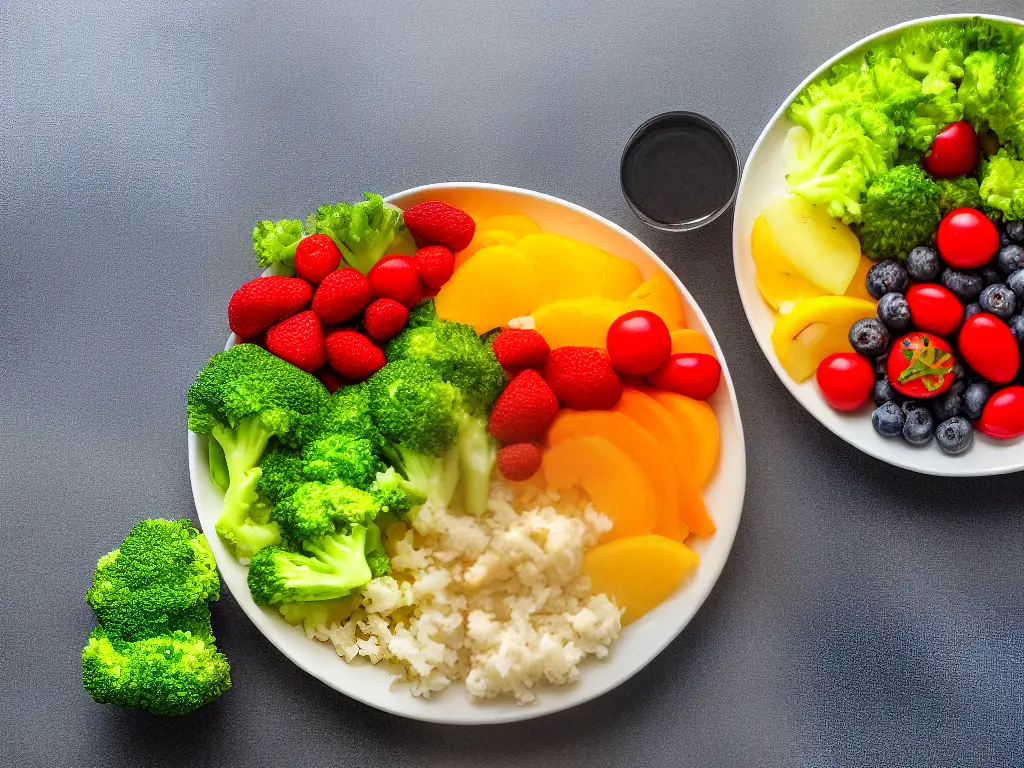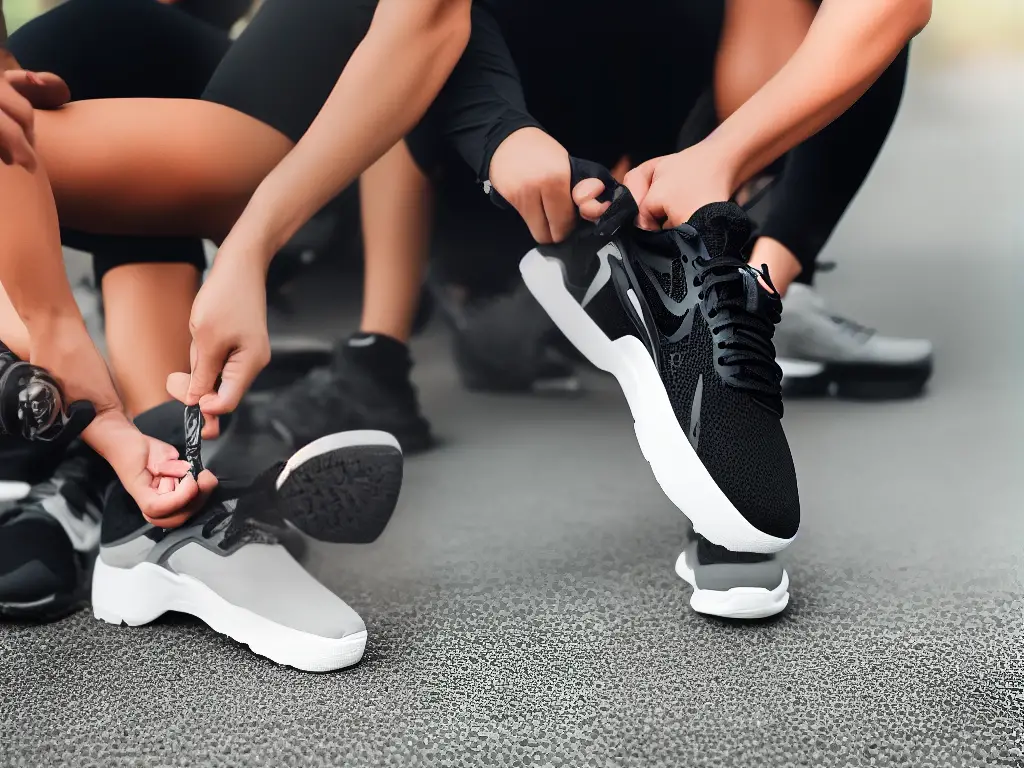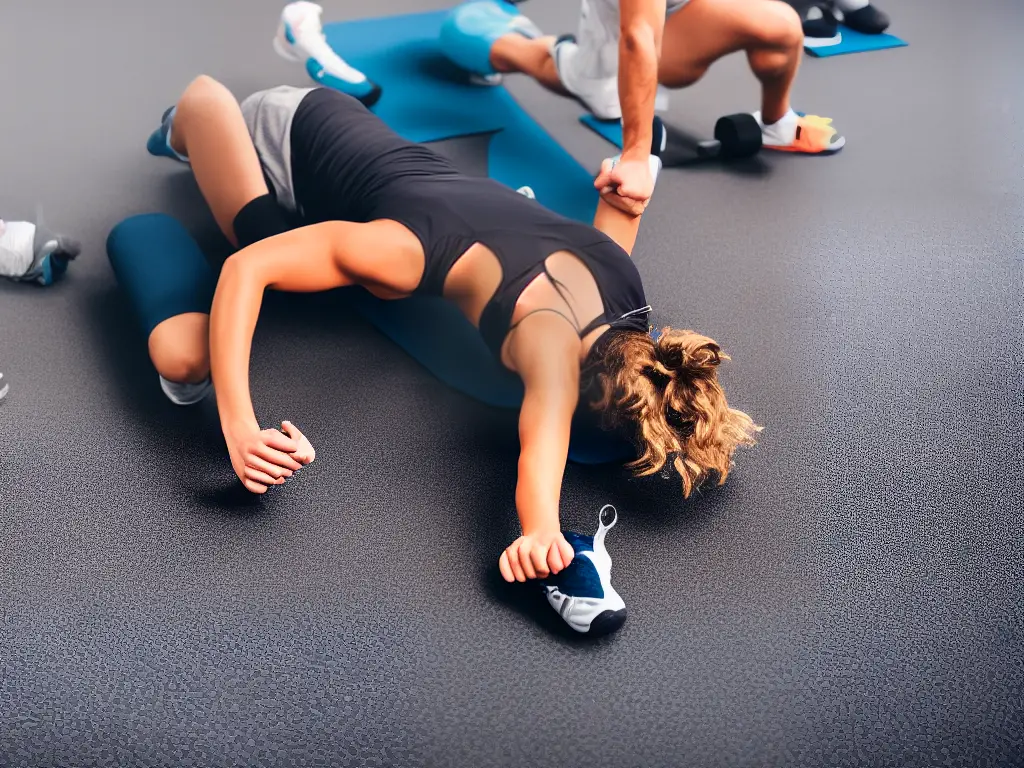Embarking on a journey to improve your strength and fitness is an exciting and rewarding experience. Bodyweight strength training offers an accessible and versatile entry point for people of all fitness levels. By mastering the fundamental exercises and their variations, you will be well on your way to building a strong, lean, and functional physique that will enhance your overall health and well-being. In this guide, we will delve into the essentials of bodyweight training, covering everything from understanding the principles and benefits to mastering the proper form and technique for a myriad of exercises.
Understanding Bodyweight Training
Bodyweight strength training is a form of exercise that uses the weight of your own body as resistance. This type of training has gained significant popularity over the years, owing to its accessibility and effectiveness in improving overall fitness. In this guide, we will provide an overview of bodyweight training, its principles, benefits, and key aspects, such as proper form and warming up.
I. Defining Bodyweight Strength Training
- Definition: Training that uses the individual’s own bodyweight as resistance
- Examples: Push-ups, squats, pull-ups and planks
II. Principles of Bodyweight Training
- Progressive overload: Gradually increasing the difficulty of exercises to promote muscle growth and strength
- Specificity: Training for the desired outcome, focusing on specific muscle groups for strength, endurance, or flexibility
- Individualization: Modifying exercises to suit personal fitness level, goals, and abilities
- Variation: Incorporating a mix of exercises to target different muscle groups and prevent boredom
III. Benefits of Bodyweight Strength Training
- Accessibility: Requires little to no equipment and can be done anywhere, making it suitable for people of all fitness levels and budgets
- Functional fitness: Improves movements and activities that are essential for daily living, such as walking, lifting, and bending
- Muscular strength and endurance: Builds lean muscle mass and stamina by targeting multiple muscle groups at once
- Flexibility and mobility: Enhances joint health, range of motion, and overall body coordination
- Mental health benefits: Reduces stress, boosts mood, and promotes mental well-being
IV. Proper Form and Technique
- Importance: Maintaining proper form prevents injuries and maximizes the effectiveness of each exercise
- Key aspects: Aligning the body in a neutral position, engaging core muscles, and breathing correctly
- Learning proper form: Utilizing online resources (videos, articles) or consulting with a fitness professional
V. Importance of Warming Up
- Benefits: Increases blood flow to muscles, improves range of motion, and reduces the risk of injury
- How to warm up: Perform 5-10 minutes of light aerobic exercises (e.g., brisk walking, jumping jacks) and dynamic stretching targeting the muscles that will be engaged during the workout
VI. Sample Beginner Bodyweight Training Routine
- Warm-up: Jumping jacks (2 sets x 30 seconds), walking lunges (2 sets x 10 reps per leg)
- Main exercises: Push-ups (3 sets x 8-12 reps), bodyweight squats (3 sets x 12-15 reps), plank (3 sets x 30 seconds)
- Cool down: Light stretching targeting the chest, legs, and core muscles
In conclusion, bodyweight strength training is a versatile and effective way to improve overall body strength, endurance, and mobility. By understanding the principles and key aspects of this practice, including maintaining proper form and warming up, individuals of all fitness levels can reap the benefits of bodyweight training. As always, consult with a fitness professional if you are unsure about specific exercises or techniques and listen to your body to avoid injuries.
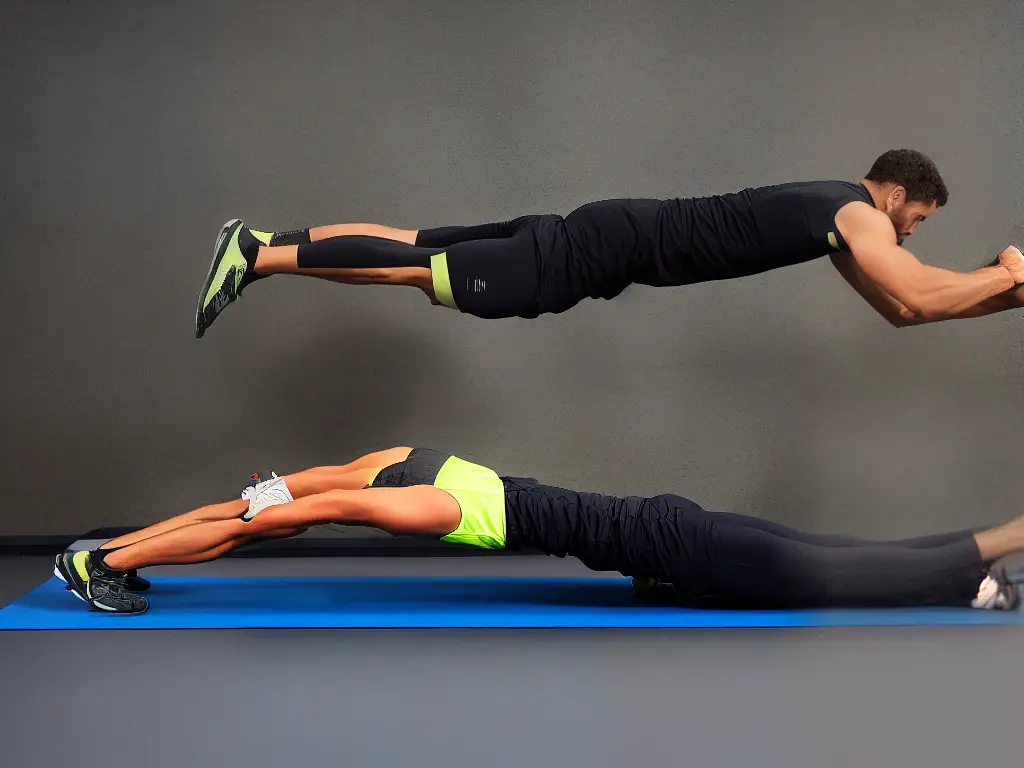
Push-Ups
The push-up is one of the best bodyweight exercises that works on various muscle groups, including the chest, shoulders, triceps, and core. Learn how to master the basic push-up form and try out variations to improve overall strength and endurance.
Basic Push-Up Form:
-
Starting position: Keep your hands slightly wider than your shoulders, palms flat on the ground, and your legs extended back to form a plank position.
-
Brace your core: Tighten your abdominal muscles and glutes to maintain a straight body alignment.
-
Lowering phase: Lower your chest to the ground, keeping your elbows close to the body. Inhale as you lower your body.
-
Push-up: Press your palms into the ground, straighten your elbows to lift your body back to the starting position. Exhale as you push up.
-
Repeat: Do 10-15 repetitions for best results before trying out different variations.
Variations to Target Different Muscle Groups:
-
Wide grip push-up: Place your hands further apart, beyond shoulder-width, to work the chest muscles more.
-
Narrow grip push-up (diamond push-up): Position your hands close together, forming a diamond shape with thumbs and index fingers touching. This variation shifts the focus to triceps and shoulders.
-
Decline push-up: Place your feet on an elevated surface, such as a bench or box, to increase the challenge on your upper chest and shoulders.
-
Incline push-up: Position your hands on an elevated surface, with feet on the ground, to target the lower chest and reduce intensity compared to the standard push-up.
-
Push-up with rotation: Perform a standard push-up, but as you push up, rotate your body to the side and extend your arm to reach towards the ceiling. This engages the oblique and core muscles and challenges stability.
-
Single leg push-up: Lift one leg off the ground while performing the standard push-up. This variation works on core stability and balance.
Tips to Improve Strength and Endurance:
-
Focus on proper form: Make sure you maintain a straight body alignment and controlled movements with each repetition.
-
Increase repetitions and sets: Start with three to four sets of 10-15 reps, increasing over time as you become comfortable with the exercise.
-
Vary the intensity: Mix in variations that target different muscle groups and increase the intensity of your workout for maximum results.
-
Include additional exercises: Add other strength exercises such as pull-ups, dips, and squats to enhance overall muscle development and functional strength.
-
Monitor progress: Track the number of repetitions, sets, and variations in each workout to monitor your progress over time.
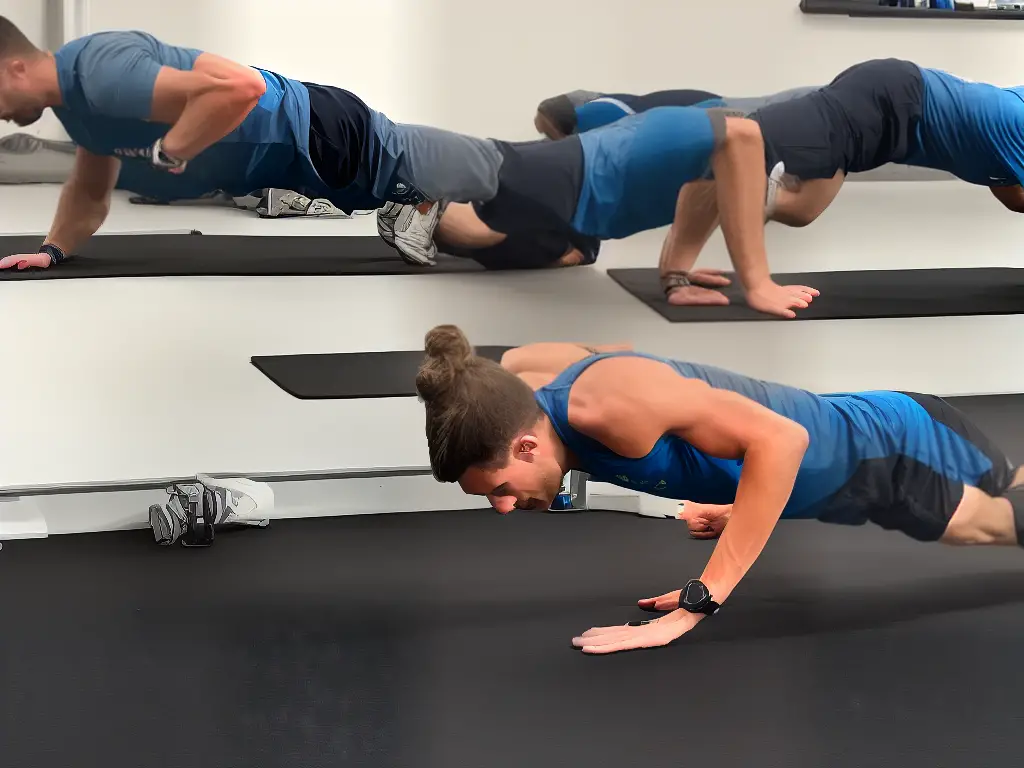
Pull-Ups
Pull-ups are an excellent bodyweight strength training exercise that targets your upper back muscles, shoulders, and arms. In this guide, we’ll teach you how to perform pull-ups with proper form and introduce you to various grip styles to maximize your workout.
Step 1: Warm up
Begin your workout with a 5-10 minute warm-up to prepare your muscles for the pull-up exercises. You can do dynamic stretches, light cardio, or more straightforward upper body exercises like arm swings or shoulder rolls.
Step 2: Select the right pull-up bar
Find a sturdy pull-up bar that can support your body weight. The bar should be high enough that your feet can’t touch the ground when you hang from it, but low enough that you can grip it comfortably while standing on your toes.
Step 3: Basic pull-up form
-
Grasp the pull-up bar with your palms facing away from your body (overhand grip) and your hands slightly wider than shoulder-width apart.
-
Hang from the bar with your arms fully extended, legs crossed behind you, and feet off the ground. This is your starting position.
-
Engage your abs, shoulder blades, and back muscles while maintaining a slight bend in your elbows to prevent over-extension.
-
Begin to pull yourself up by bending your elbows and driving them down and back, bringing your chest towards the bar.
-
Continue to pull yourself up until your chin is above the bar.
-
Slowly lower yourself back down to the starting position, focusing on controlling your descent and maintaining tension in your muscles.
Note: This description assumes you can already perform a pull-up. If you cannot yet perform a pull-up, you can start by doing negatives (focusing on the slow descent) or using assistance bands to help build strength.
Step 4: Different grip styles
-
Overhand grip: This is the traditional grip for pull-ups, as mentioned above, where your palms face away from your body. This grip focuses more on the lat muscles, biceps, and forearms.
-
Underhand grip (Chin-up): In this grip, your palms face towards your body, and your hands are shoulder-width apart or closer. This grip places more emphasis on your biceps and forearms, as you pull yourself up.
-
Wide grip: The wide grip variation involves placing your hands further apart on the pull-up bar. This grip targets the muscles in your upper back and shoulders more than the traditional grip.
-
Narrow grip: The narrow grip involves placing your hands closer together on the pull-up bar. This grip focuses on the lower lats and your biceps.
-
Mixed grip: In the mixed grip, one hand uses an overhand grip while the other uses an underhand grip. This variation helps to equally emphasize both sides of your upper body.
Step 5: Training and progressions
Initially, aim for 3-4 sets of pull-ups, with as many repetitions as you comfortably can do in each set. Make sure to rest for 1-2 minutes between each set. Gradually increase the difficulty over time by adding more repetitions, sets, or incorporating different grip styles.
Pull-ups are a fantastic bodyweight strength training exercise for your upper back, shoulders, and arms. By following these instructions and practicing various grip styles, you’ll not only improve your pull-up form but also increase your overall upper body strength and muscular definition. Stick to a regular workout routine, and you’ll see progress in no time!
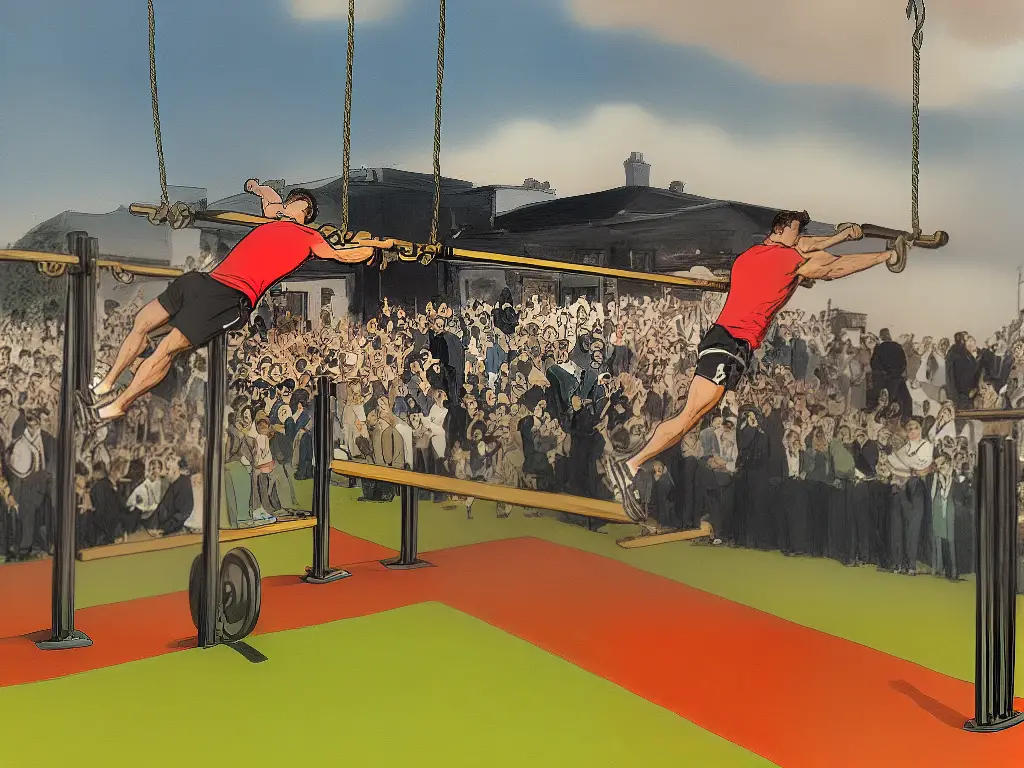
Bodyweight Squats
Bodyweight squats are an excellent lower body exercise that targets your quadriceps, hamstrings, glutes, and calves. By learning proper form and incorporating different squat variations into your routine, you can effectively strengthen your lower body.
Basic Squat Form:
- Stand tall with your feet shoulder-width apart, toes pointing slightly outward.
- Engage your core and maintain a straight back throughout the exercise.
- Begin the squat by bending at the hips and knees, lowering your body down as if sitting in a chair.
- Keep your knees in line with your toes, avoiding any inward or outward movement.
- Continue lowering your body until your thighs are parallel to the ground or as close as your flexibility allows.
- Press into your heels and push your hips forward, straightening your legs to return to the starting position.
- Repeat for the desired number of reps.
Bodyweight Squat Variations:
- Jumping Squats: This plyometric variation adds explosiveness and intensity to the basic squat, increasing its cardiovascular and strength-building benefits.
- Perform the basic squat as described above, but as you rise, jump into the air as high as you can.
- Land softly on your feet, absorbing the impact by bending your knees and smoothly transitioning into the next squat.
- Repeat for the desired number of reps.
- Pistol Squats: This advanced variation challenges your balance, flexibility, and leg strength.
- Stand tall with your feet together, then extend your left leg straight in front of you.
- Extend your arms straight out in front of you for balance.
- Begin the squat by bending your right knee while keeping your left leg fully extended and raised in front of you.
- Lower your body until your right thigh is parallel to the ground, or as close as your flexibility allows.
- Press into your right heel to rise back to the starting position.
- Complete the desired number of reps on one leg before switching to the other leg.
- Sumo Squats: This variation places more emphasis on your inner thighs and glutes.
- Stand with your feet wider than shoulder-width apart and your toes pointing out at a 45-degree angle.
- Perform the squat, keeping your knees in line with your toes, and lowering your body until your thighs are parallel to the ground.
- Press into your heels and push your hips forward to return to the starting position.
- Repeat for the desired number of reps.
Remember to warm up before beginning your workout and stretch afterward to support muscle recovery and flexibility. Additionally, make sure to maintain proper form throughout each squat variation to prevent injury and ensure the most effective workout.
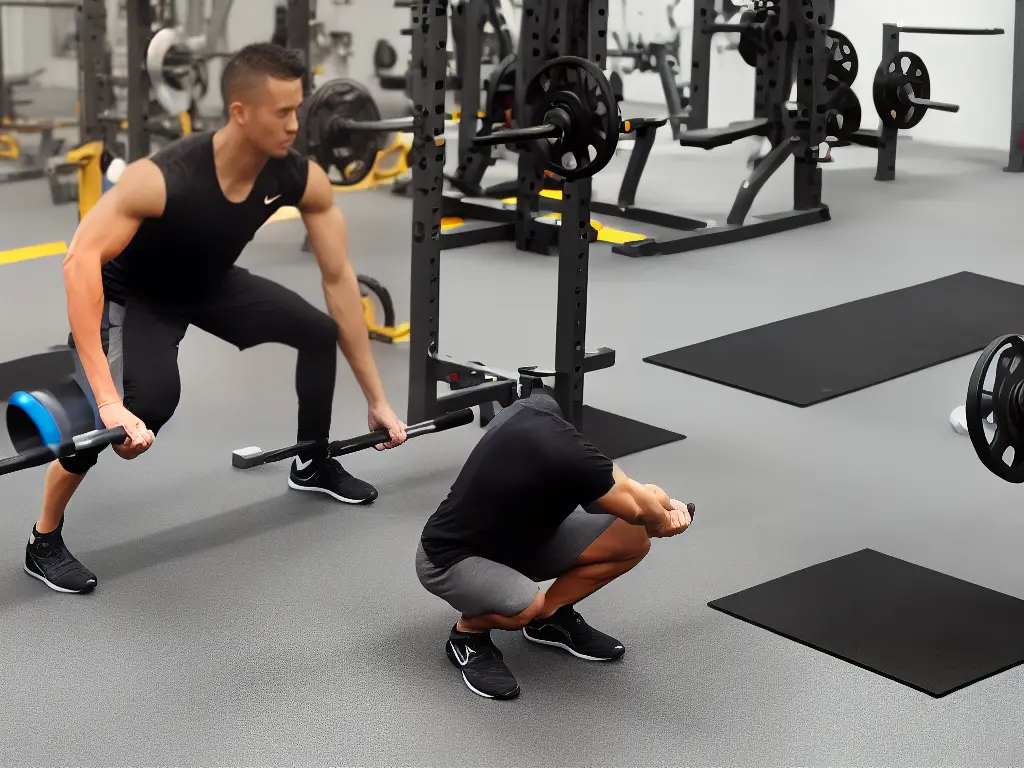
Lunges
Lunges are an excellent bodyweight strength training exercise that primarily targets the lower body, specifically the quadriceps, hamstrings, glutes, and calves. This easy-to-perform exercise also helps improve stability and flexibility.
Basic Lunge:
- Stand in an upright position with feet hip-width apart, and engage your core muscles to maintain a straight and stable posture.
- Take a step forward with your right foot. Make sure that the step is big enough so that when you lunge, your left knee is almost touching the ground, while your right thigh remains parallel to the ground.
- Lower yourself by bending your knees, keeping your upper body straight and shoulders relaxed. Make sure your right knee is aligned with your ankle and not extending past your toes.
- Push yourself back up to the starting position via the right heel, using the strength of your glutes, thighs, and core.
- Perform the same steps above, but with the left foot stepping forward.
- Complete three sets of 10-15 lunges for each leg to start with, and gradually increase the number of sets and repetitions as you progress.
Lunge Variations:
- Reverse Lunge: Step backward with your right foot and perform the same movements as in the basic lunge.
- Side Lunge: Step to the right with your right foot, keeping toes pointed forward. Bend only the right knee, while keeping the left leg straight. Push off the right heel to return to the starting position.
- Walking Lunge: Perform a basic lunge with your right foot, but instead of returning to the starting position, bring your left foot forward to perform the next lunge, “walking” forward with each lunge.
- Jumping Lunge: Perform a basic lunge, and then explosively push upwards, jumping off the ground and switching legs mid-air, landing in a lunge position with the opposite leg forward.
- Bulgarian Split Squat (also known as rear foot elevated split squat): Place your left foot on an elevated surface, like a step or a bench, behind you. Perform a lunge with your right foot forward, and then return to the starting position.
Remember that as with any exercise, proper form is crucial to prevent injury and effectively work the target muscles. Challenge yourself with variations and increased repetitions for improved lower body strength, stability, and flexibility.
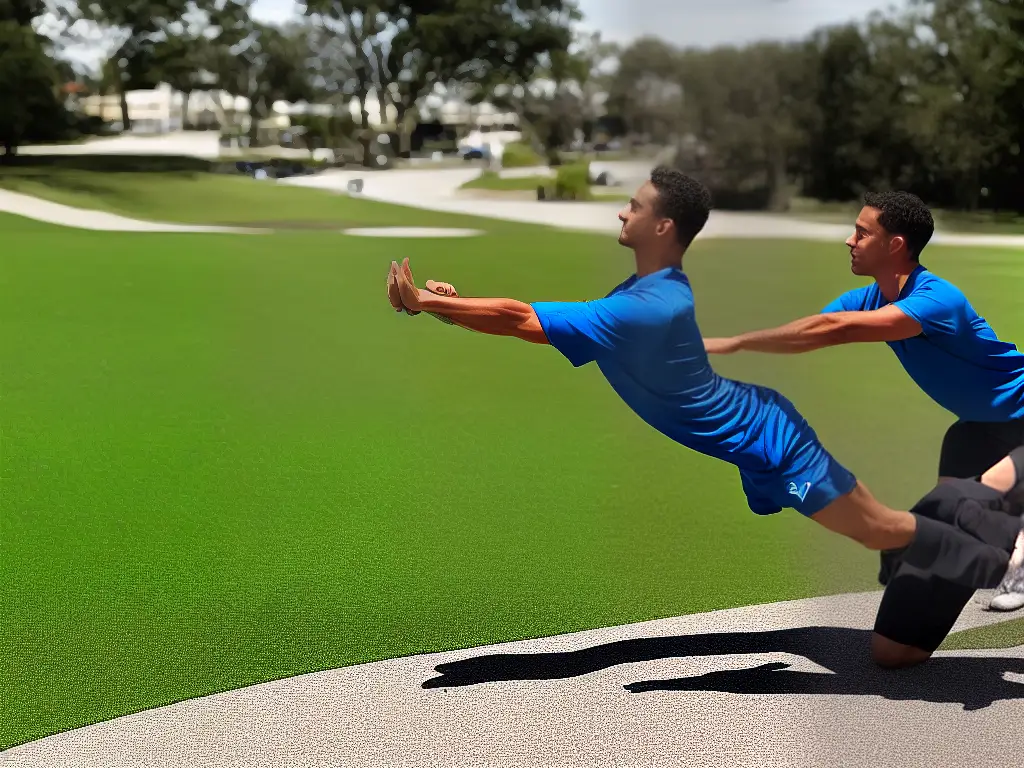
Planks and Core Exercises
Bodyweight strength training is an effective way to build muscle, increase stability, and improve endurance without the need for gym equipment. In this guide, you will discover different plank variations and other bodyweight core exercises to help you develop strength and endurance in your abdominals, obliques, and lower back.
1. The Basic Plank
The plank is a foundational exercise targeting the muscles of your abdominal wall, lower back, and shoulders.
- Start in a prone position, lying face down on the ground, with your forearms on the floor and your elbows directly beneath your shoulders.
- Raise your body off the ground, tightening your core muscles and keeping your back straight. Your body should form a straight line from your head to your heels.
- Hold this position for as long as you can, aiming for at least 30 seconds. As your core strength increases, work towards holding the plank for 1-2 minutes.
2. Side Plank
The side plank targets your obliques, located on the sides of your torso.
- Begin by lying on your side, with your body in a straight line and your elbow directly beneath your shoulder.
- Raise your hips off the ground, forming a straight line from your head to your feet.
- Hold this position for at least 30 seconds, then switch sides and repeat.
3. Reverse Plank
The reverse plank targets your lower back, glutes, and hamstrings.
- Sit on the ground with your legs straight out in front of you, hands placed on the floor behind you with fingertips pointing towards your feet.
- Press your hands and heels into the ground, lifting your hips and torso until your body forms a straight line from shoulders to heels.
- Hold this position for at least 30 seconds, increasing the duration as your strength improves.
4. Single Leg Plank
The single leg plank adds a challenge to the basic plank by shifting your weight onto one leg.
- Begin in the basic plank position.
- Slowly raise one foot off the ground, keeping your leg straight and maintaining a flat back.
- Hold this position for 15-30 seconds, then switch legs and repeat.
5. Mountain Climbers
This dynamic exercise targets your abdominals, obliques, and hip flexors.
- Begin in a push-up position with your hands shoulder-width apart and positioned directly beneath your shoulders.
- Bring one knee towards your chest, engaging your core muscles as you lift.
- Quickly switch legs, bringing the other knee towards your chest as you return the first leg to its starting position.
- Continue alternating legs in a fluid motion for 30 seconds to 1 minute.
6. Russian Twists
Russian twists target your obliques and overall core strength.
- Sit on the ground with your knees bent and feet flat on the floor.
- Lean slightly back, engaging your abdominals as you lift your feet off the ground and bring your knees towards your chest.
- Clasp your hands together in front of your chest, and twist your torso to the right, then to the left, tapping the ground beside your hip each time you twist.
- Continue twisting for 30 seconds to 1 minute, maintaining the raised leg position.
Consistently practicing these plank variations and core exercises will help you develop stability, strength, and endurance in your abdominals, obliques, and lower back. And the best part? You can do them all with just your body weight and a bit of space. So, get started today, and watch your core strength improve.
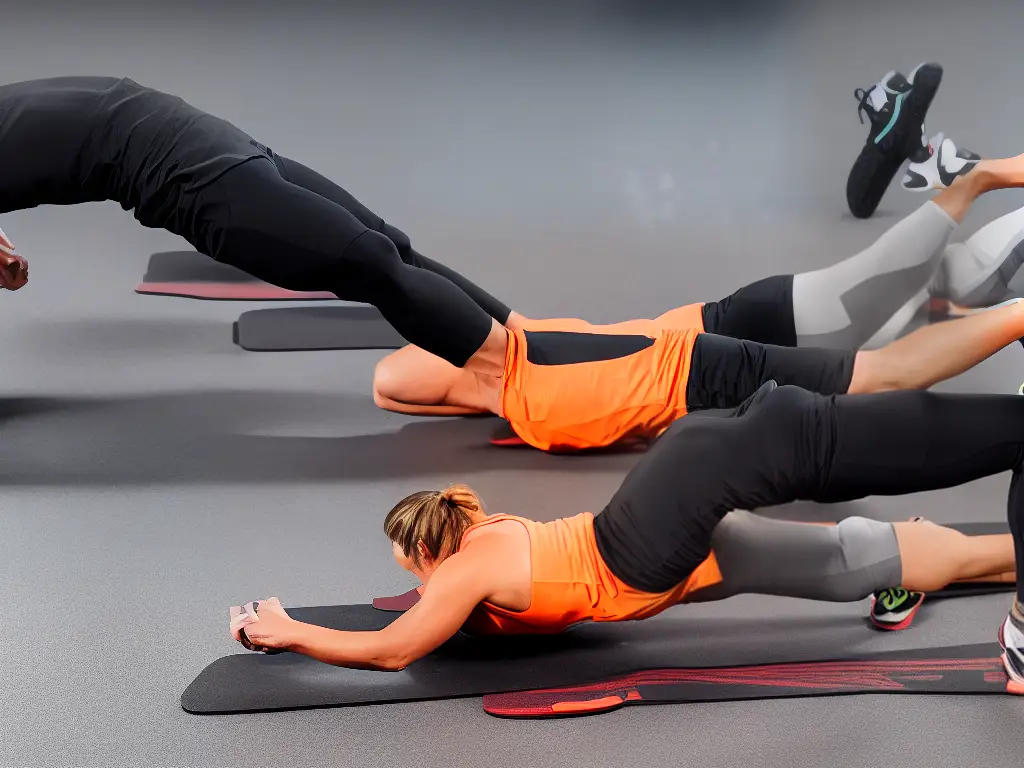
Dips
Dips are an effective bodyweight strength training exercise that works multiple muscle groups, including the triceps, chest, and shoulders. This exercise can be performed using parallel dip bars, a corner of a countertop, or even the edge of a sturdy chair.
In this guide, we’ll introduce you to dips and their variations, helping you strengthen your triceps, chest, and shoulders.
Instructions:
- Warm-up: Before starting any exercise routine, it’s crucial to warm up your muscles and joints properly. Perform 5-10 minutes of light cardio, such as jogging in place, jumping jacks, or high knees, followed by some dynamic stretches targeting the chest, triceps, and shoulder muscles.
- Find a suitable location for performing dips:
- Parallel dip bars at a local park or gym
- A sturdy countertop with a corner
- Two sturdy chairs placed side by side (be cautious and ensure stability)
- Basic Dip Technique:
- Position yourself between the bars (or chairs/countertop edge) with your hands firmly gripping the bars and with your palms facing inwards.
- Lift your body off the ground, extending your arms fully, supporting your weight on your hands, and keep your legs bent.
- Slowly lower your body by bending your elbows until they form a 90-degree angle, keeping your chest up and leaning slightly forward.
- Push yourself back up to the starting position, fully extending your arms and repeating the process for the desired number of reps.
- Dip Variations:
- Tricep-focused Dips: Lean your torso more upright as you perform the dip, minimizing the chest and shoulder involvement, and placing more emphasis on the triceps.
- Chest-focused Dips: When descending, lean further forward and flare your elbows out to the side, lowering your chest towards the bars. This variation places greater emphasis on the chest muscles.
- Shoulder-focused Dips: Raise your feet off the ground to the nearest parallel surface or on the dip bars themselves. Tuck your knees close to your chest and maintain a more upright torso as you perform the dip.
- Assisted Dips: If you’re unable to perform a full dip, use a resistance band or an assisted dip machine to reduce the load and work on progressively increasing your strength.
- Reps and Sets:
- As a beginner, aim for 3 sets of 5-10 reps per exercise.
- As you progress, increase the number of sets and reps or use a weighted vest or dip belt for added resistance.
- Progression Tips:
- Focus on maintaining proper form throughout the exercise.
- Avoid using momentum or swinging your body to complete the movement.
- Progress slowly and consistently, increasing the number of reps and/or sets as your strength improves.
In conclusion, dips are a versatile and effective bodyweight exercise that can help you build strength in your triceps, chest, and shoulders. Add them to your workout routine and watch your upper body strength and muscle definition improve over time. Remember always to use proper form, progress steadily, and ensure safety by using sturdy equipment. Good luck on your strength training journey!
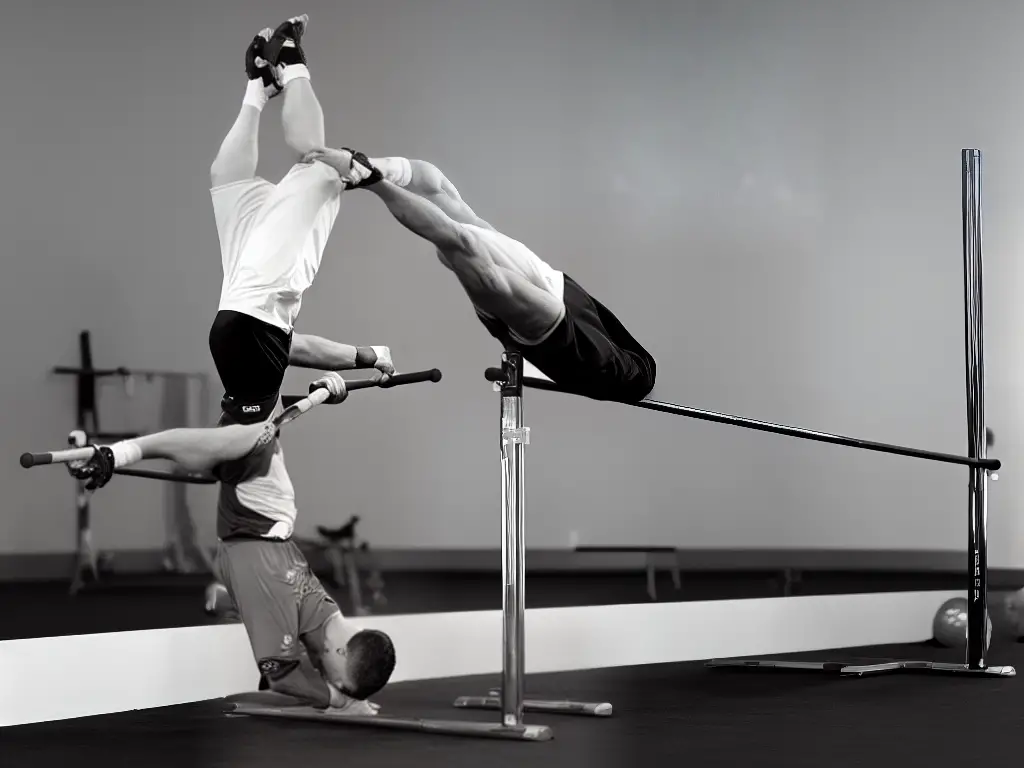
Burpees
Burpees are an excellent total body exercise that targets multiple muscle groups. It helps to boost your cardiovascular endurance and overall fitness level. Follow these step-by-step instructions to master the burpee and incorporate some variations to keep your routine fresh and challenging.
1. Basic Burpee:
- Stand with your feet shoulder-width apart and arms by your sides.
- Squat down quickly and place your hands on the ground in front of your feet.
- Kick your feet back and perform a push-up.
- Bring your knees back to your chest and return to a squatting position.
- Jump up and clap your hands overhead.
- Land softly and repeat the exercise.
2. Half Burpee (For Beginners or Low Impact):
- Stand with your feet shoulder-width apart and arms by your sides.
- Bend your knees and place your hands on the ground.
- Step or jump your feet back into a plank position.
- Step or jump your feet back towards your hands.
- Stand up straight and repeat the exercise.
3. Push-Up Burpee:
- Follow the steps of the basic burpee, but add an extra push-up each time you drop into the plank position.
- This variation focuses on your upper body muscles.
4. Jump-to-Squat Burpee:
- Perform a basic burpee but instead of jumping up, jump forward into a deep squat.
- This variation focuses on your leg strength and explosiveness and will further challenge your lower body muscles.
5. Mountain Climber Burpee:
- Perform a half burpee to get into the plank position.
- Quickly alternate driving your knees towards your chest for four repetitions (two per leg).
- Jump or step your feet back towards your hands and stand or jump up.
- This variation adds an extra core challenge and increases cardiovascular intensity.
Remember to practice proper form and build your stamina gradually. Begin with a few repetitions and sets, increasing intensity by adding more reps or incorporating more challenging variations. Before starting any new exercise program, especially with pre-existing health conditions or concerns, seek advice from a qualified healthcare professional.
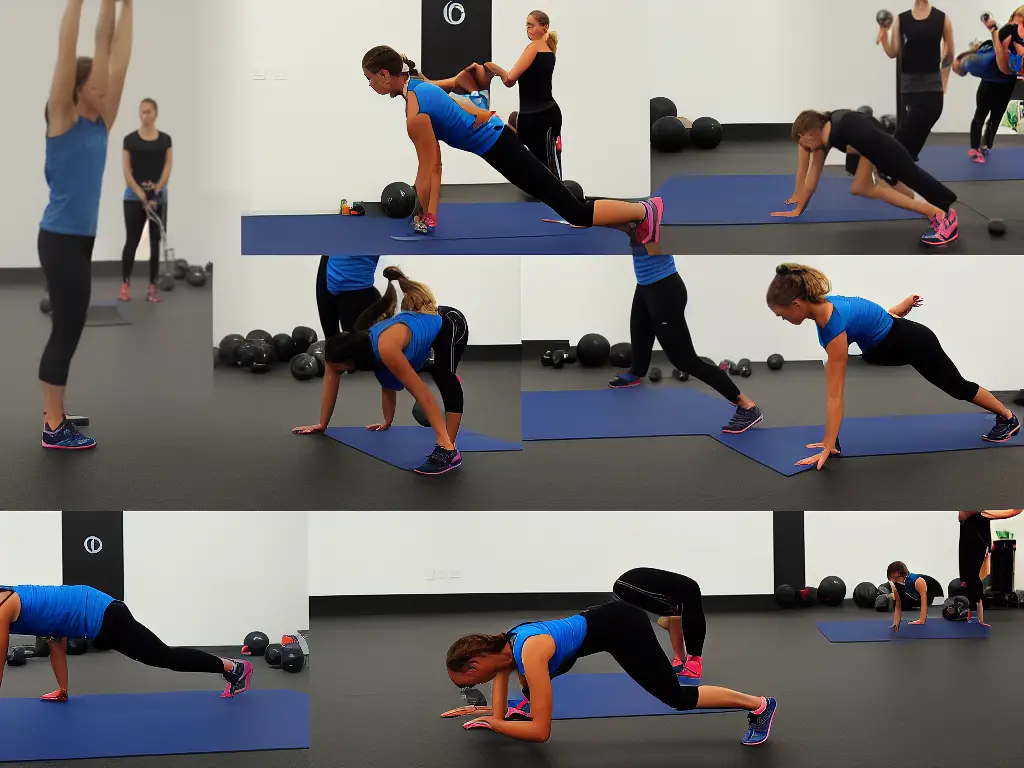
Creating a Balanced Workout Routine
Step 1: Assess your fitness level
Before starting any workout routine, you should assess your current fitness level. This will help you understand your strengths, areas that may need improvement, and set realistic workout goals. You can do this by performing a few basic exercises, such as push-ups, squats, and planks, and noting how many repetitions or how long you can maintain each exercise.
Step 2: Set your goals
Determine your fitness goals so you can design a workout plan specifically tailored to your needs. Your goals could include increasing strength, enhancing flexibility, improving endurance, or losing weight. Be specific with your goals, making them measurable and time-bound.
Step 3: Choose your exercises
A balanced workout routine should include exercises that target all major muscle groups, including upper body, lower body, and core. Examples of exercises that can be incorporated into your bodyweight strength training routine are:
- Upper body exercises: push-ups, dips, pull-ups, and chin-ups.
- Lower body exercises: squats, lunges, step-ups, and calf raises.
- Core exercises: planks, leg raises, bicycle crunches, and Russian twists.
Step 4: Plan your workout frequency and duration
Determine how many days per week you will be working out and for how long. It’s essential to give your muscles time to recover between workouts, so aim for at least one rest day between strength training sessions. Beginners should start with 3-4 workout sessions per week, and each session should last around 45-60 minutes.
Step 5: Create your workout plan
Structure your workout by including a warm-up, the main exercise routine, and a cool-down/stretching segment. Here’s a sample workout plan:
- Warm-up: Spend 5-10 minutes warming up your muscles with light cardio exercises such as jogging in place, jumping jacks, or high knees.
- Main exercise routine: Divide your exercise routine into circuits, with each circuit containing an upper body, lower body, and core exercise. Perform each exercise for a set number of repetitions or a set time, and then move on to the next exercise without resting. Once you’ve completed all exercises in one circuit, rest for one minute before starting the next circuit. Repeat the circuit 2-3 times depending on your fitness level.
Sample circuit:
- Push-ups: 10-20 repetitions or for 45 seconds
- Squats: 15-30 repetitions or for 45 seconds
- Planks: Hold for 30-60 seconds
- Cool-down/stretching: Spend 5-10 minutes cooling down and stretching your muscles to prevent injury and promote flexibility.
Step 6: Track your progress and make adjustments
Keep track of your progress by recording your workouts and any improvements in your performance. This will help you stay motivated and allow you to adjust your workout routine as needed. As you get stronger and more comfortable with the exercises, you can increase the number of repetitions, duration, or sets to continue challenging your muscles and prevent plateaus.
Remember, consistency is key when it comes to achieving your fitness goals. Stay dedicated to your workout routine, and don’t be afraid to make adjustments as needed to keep things fresh and challenging. And most importantly, listen to your body and ensure you are practicing proper form to avoid injuries and maximize results.

Rest, Recovery, and Nutrition
Bodyweight strength training is an effective way to improve your overall fitness levels without the need for gym equipment. However, to maximize the results of these exercises, it is crucial to pay attention to three key factors: rest, recovery, and proper nutrition. These elements are essential not only for preventing injury but also for promoting progress in your strength training journey.
A. Importance of Rest
- Prevents overtraining
- Consistent training without appropriate rest can lead to overtraining, which adversely impacts performance, increases injury risk, and results in burnout.
- Promotes muscle repair and growth
- During rest periods, the body repairs muscle tissue, allowing them to grow stronger and larger.
- Improves mental focus
- Adequate rest is essential for mental clarity and focus during workouts, ensuring the right techniques and mindset are maintained throughout the training.
B. How to Rest Effectively
- Schedule rest days
- Plan at least one or two rest days per week, depending on your training intensity and goals.
- Listen to your body
- If your body feels more fatigued than usual, take additional rest to prevent injury and burnout.
- Sleep
- Aim for at least 7-9 hours of sleep each night, as it is a key component to repair and restore your body.
C. Importance of Recovery
- Minimizes muscle soreness
- Proper recovery techniques help relieve muscle soreness and expedite the healing process.
- Increased flexibility and mobility
- Recovery practices such as stretching and foam rolling can improve flexibility and overall mobility.
- Enhances overall performance
- Allow your body to recover correctly to maintain good strength levels and avoid setbacks in progress.
D. How to Recover Properly
- Cool-down and stretching
- After your workout, perform a 5-10 minute cool-down with gentle movements and stretches to support muscle recovery.
- Foam rolling
- Utilize a foam roller to target tight muscles and relieve muscle tension.
- Active recovery
- On rest days, engage in low-intensity activities, such as walking or yoga, to promote blood flow and help muscles recover more efficiently.
E. Importance of Nutrition
- Fuels workouts
- Consuming the proper nutrients provides the necessary energy to perform bodyweight strength training.
- Aids muscle recovery and growth
- Supplying your body with adequate proteins, carbohydrates, and fat supports muscle growth and recovery.
- Enhances overall health
- A balanced diet improves overall health, making it easier to stay consistent with your workouts.
F. Basic Nutritional Guidelines
- Protein
- Aim to consume 1.2 to 2.0 grams of protein per kilogram of body weight daily, focusing on lean protein sources such as chicken, turkey, fish, legumes, and tofu.
- Carbohydrates
- Carbohydrates should comprise 45-65% of your daily caloric intake. Opt for complex carbohydrates like whole grains, fruits, and vegetables for sustained energy.
- Fats
- Consume around 25-35% of your calories from healthy fats like avocados, nuts, seeds, and olive oil to support hormone production, brain health, and cell functions.
- Stay hydrated
- Drink plenty of water throughout the day. Aim for at least (8) 8-ounce glasses of water daily, and increase your intake during workouts.
By integrating effective rest, recovery, and nutrition practices into your bodyweight strength training regimen, you’ll optimize your progress, minimize the risk of injury, and enjoy a more satisfying workout experience. Remember to listen to your body and adjust your program accordingly to ensure long-term success in your fitness journey.
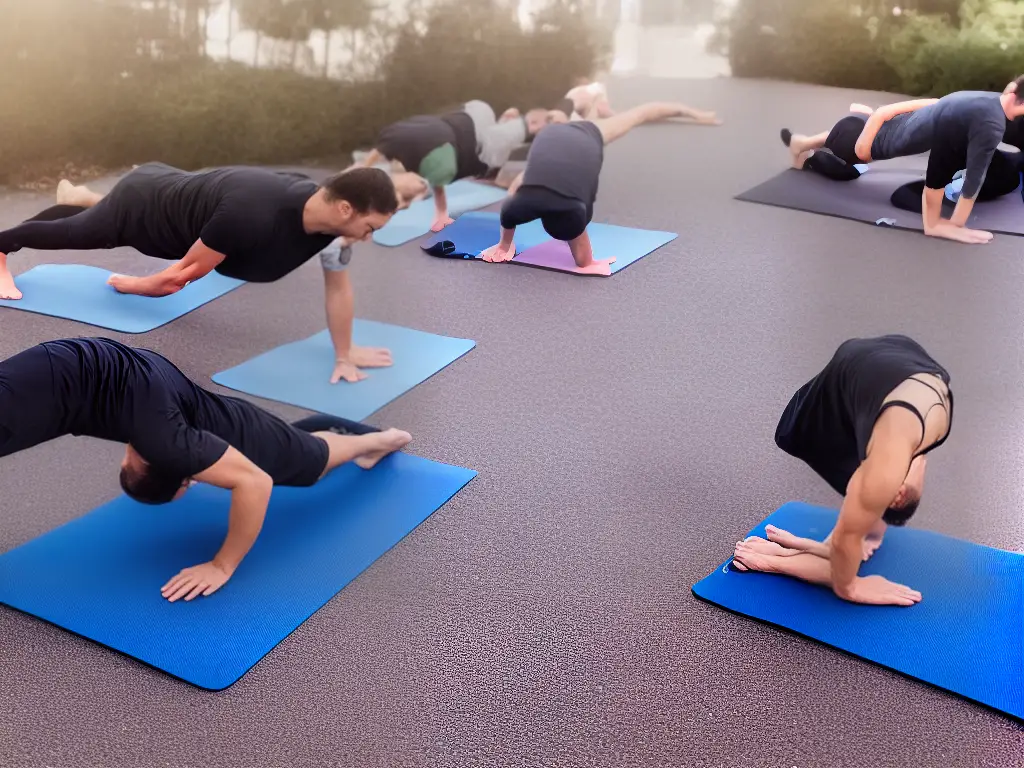
As you progress on your bodyweight strength training journey, always prioritize proper form and technique to maximize your results and minimize the risk of injury. Remember, consistency and patience are the keys to success. By following the guidelines outlined in this guide, you can develop a balanced and efficient workout routine that works in harmony with your personal goals and lifestyle. Coupled with adequate rest, recovery, and nutrition, you will discover the true power of bodyweight training as an integral part of your daily routine that paves the way to a healthier, stronger you.
